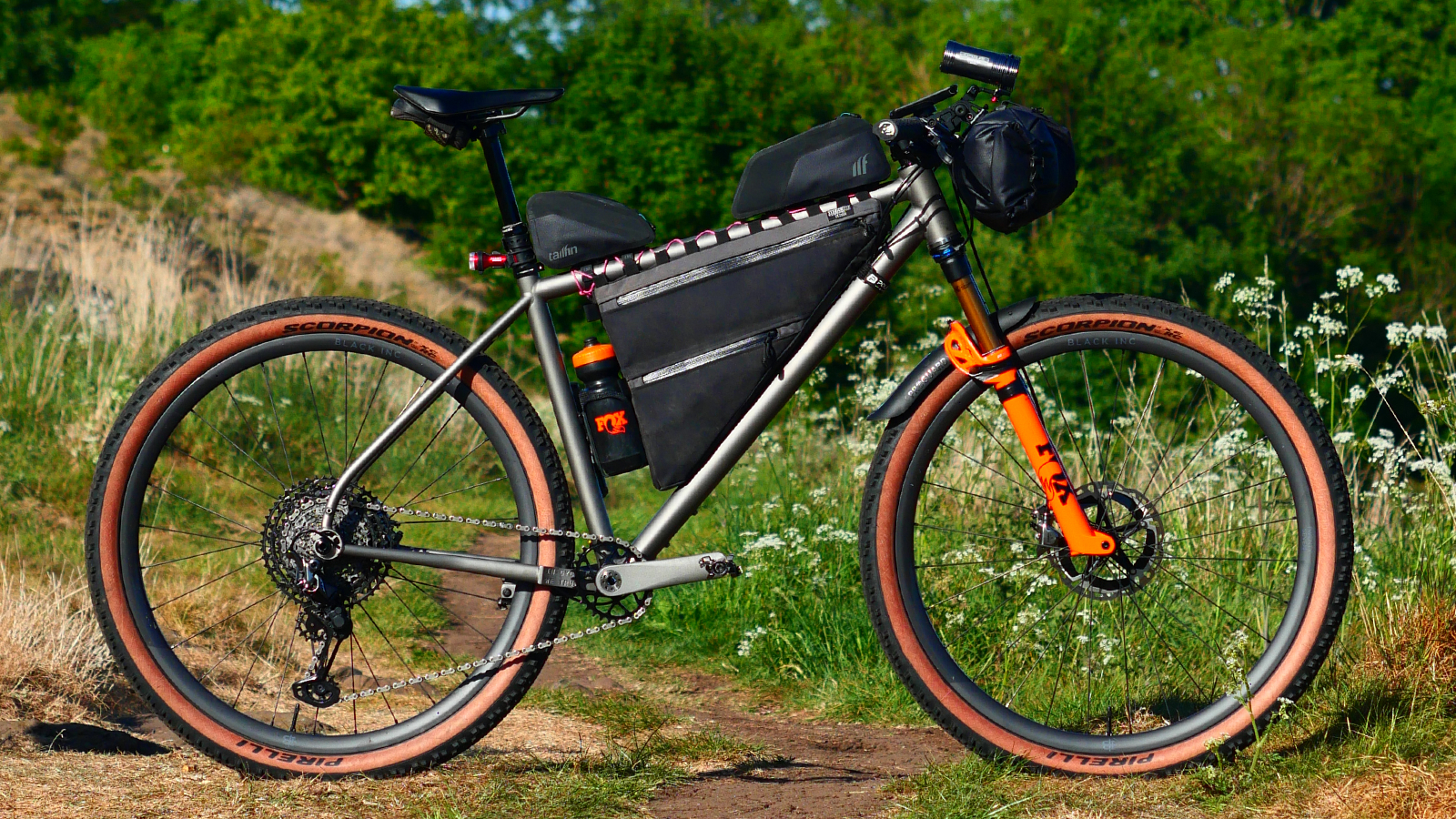Best aero helmets: The fastest helmets, wind-tunnel tested
The best aero helmets add aerodynamics to the protection you already need - don’t leave free speed on the table
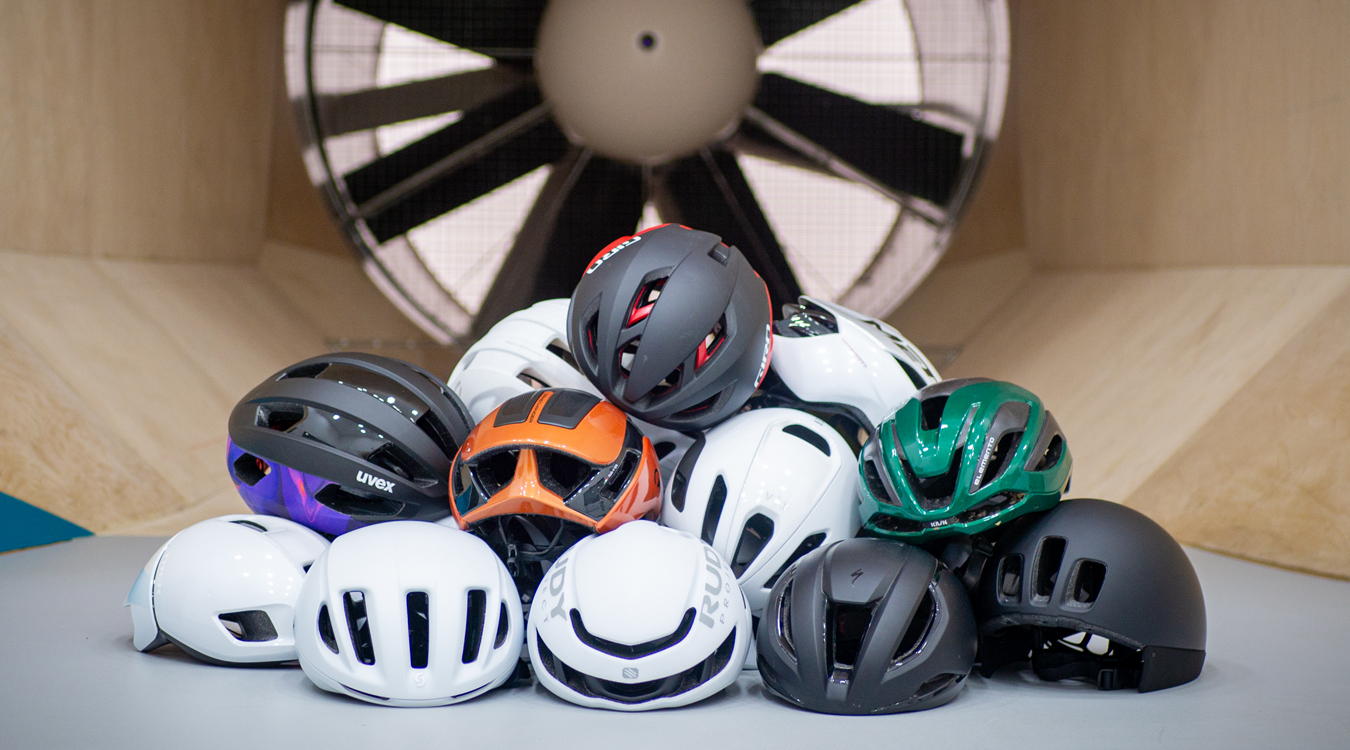
Upgrading to one of the best aero helmets is an easy way to go faster on a bike, and the benefits on offer can be pretty substantial.
The best aero bike helmets will have been designed to smooth the airflow over your head, offering free speed that may not be available in a more open, vented helmet. To achieve this, there may be fewer vents in the helmet, so it may not keep your head as cool as a non-aero model.
As mentioned in our guide to the best road bike helmets, you likely wear a helmet every time you ride. The primary reason for that is safety but given there isn't much data available to compare one helmet versus the next, other metrics such as ventilation and aerodynamics come into play when deciding which to buy.
Today's best aero helmets can offer decent ventilation too - much better than they could just a few years ago - so unless you live in the desert, you're probably going to place aerodynamics at the top of your priority list.
We recently tested 47 helmets in a wind tunnel, 41 aero road helmets plus six time trial helmets, in the world's largest comparative wind tunnel test, and we've used that data combined with our real-world experience using each of them, to narrow down our pick of the best aero helmets for all types of riders.
You'll see figures for watts saved versus baseline for each helmet. This was measured at 40km/h wind speed versus the Abus Powerdome, a helmet we selected as a good example of the type of inexpensive all-rounder helmet a rider might be upgrading from.
For those who focus on time trials, check out our list of the best time trial helmets. Those options represent no-holds-barred speed-focused helmets that aren't usable for everyday riding. For everyone else, keep reading to see a list of options that prioritise aero speed, but without losing sight of everyday usability or head lower down for our buyer's guide to the best aero helmets and how to choose.
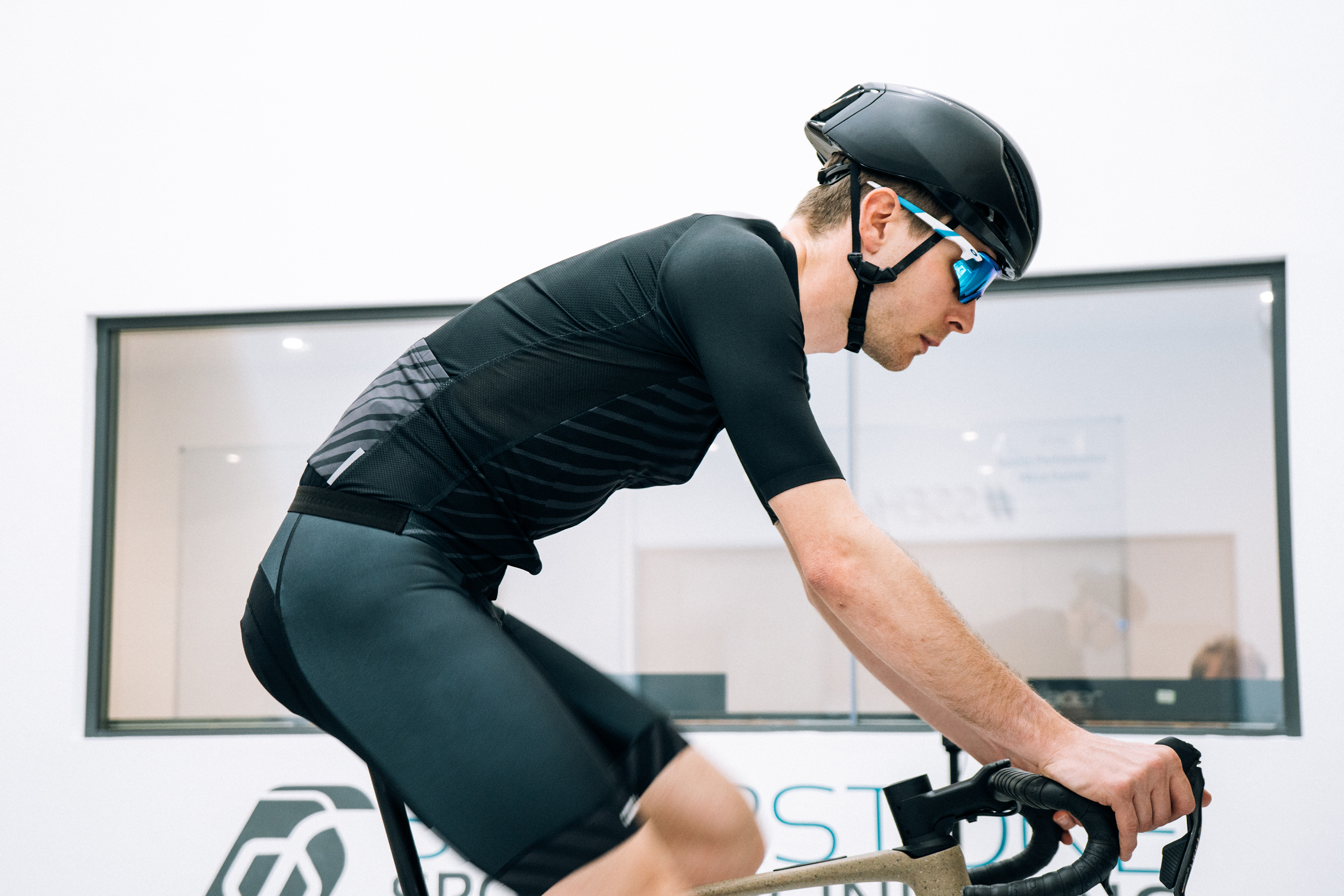
I've been riding and racing for over 15 years and am Cyclingnews's aero expert, heading to the Silverstone, UK, wind tunnel with everything from aero bikes to aero socks to independently assess products' aero claims.
Quick list: Best aero helmets
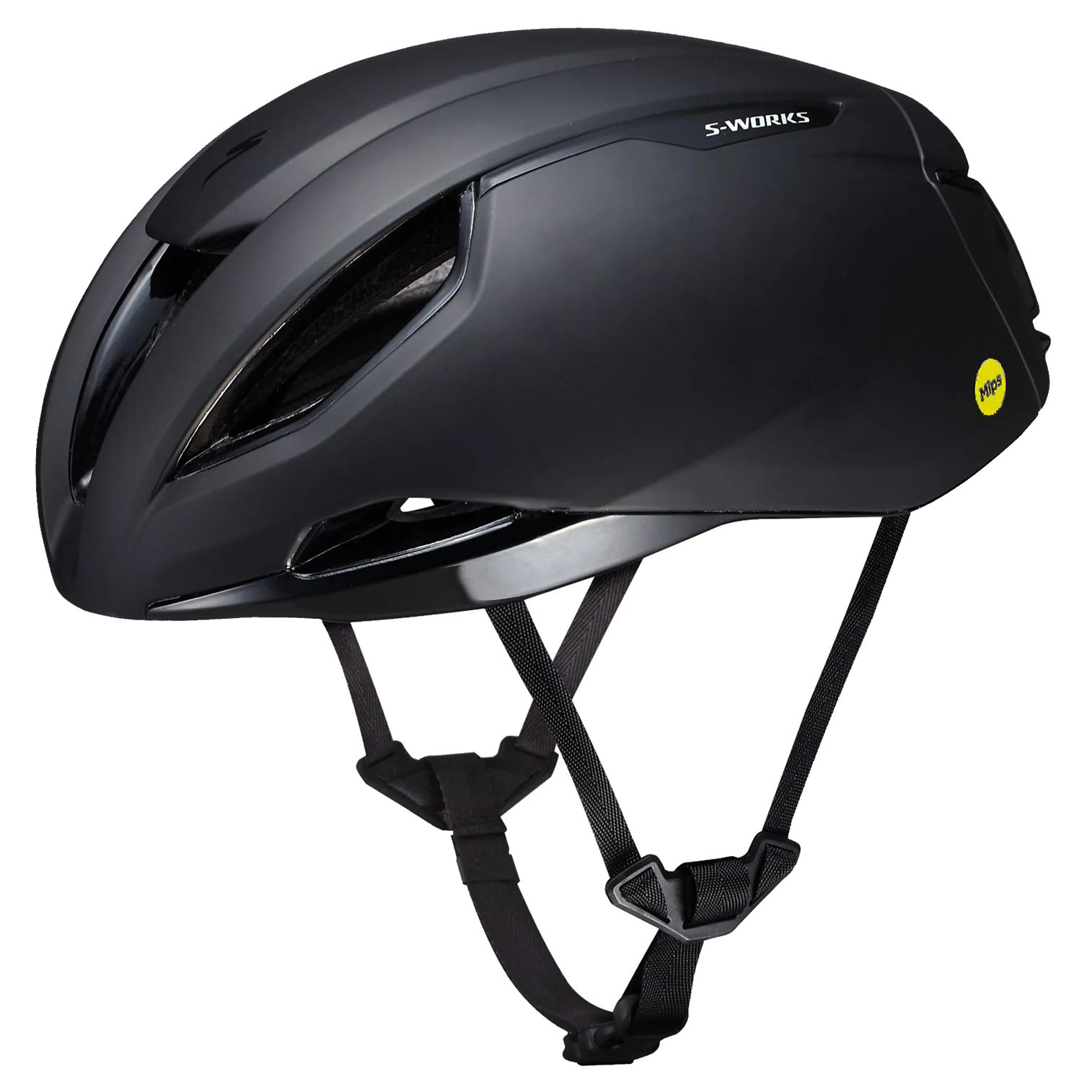
The Specialized Evade III is a design that’s been refined over multiple generations and the result is a helmet that does a good job in every category. It was one of the fastest 'normal' looking helmets in our test, it is super comfortable, and provides excellent ventilation.
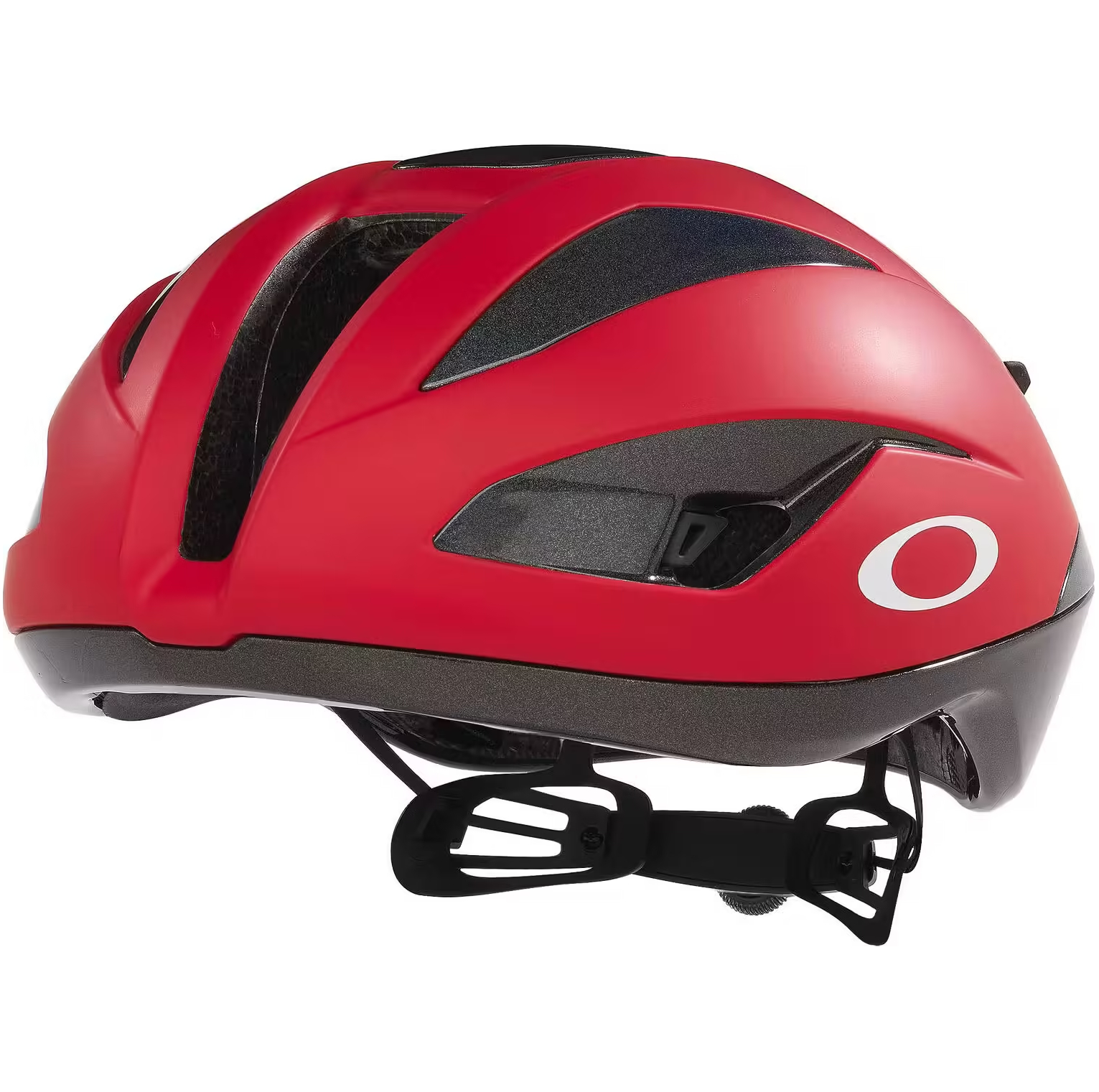
The Oakley Velo Mach was the fastest helmet in our wind tunnel test. It was also one of the lighter ones, although it doesn't include MIPS or other rotational impact tech. If you want speed and low weight, take a look.
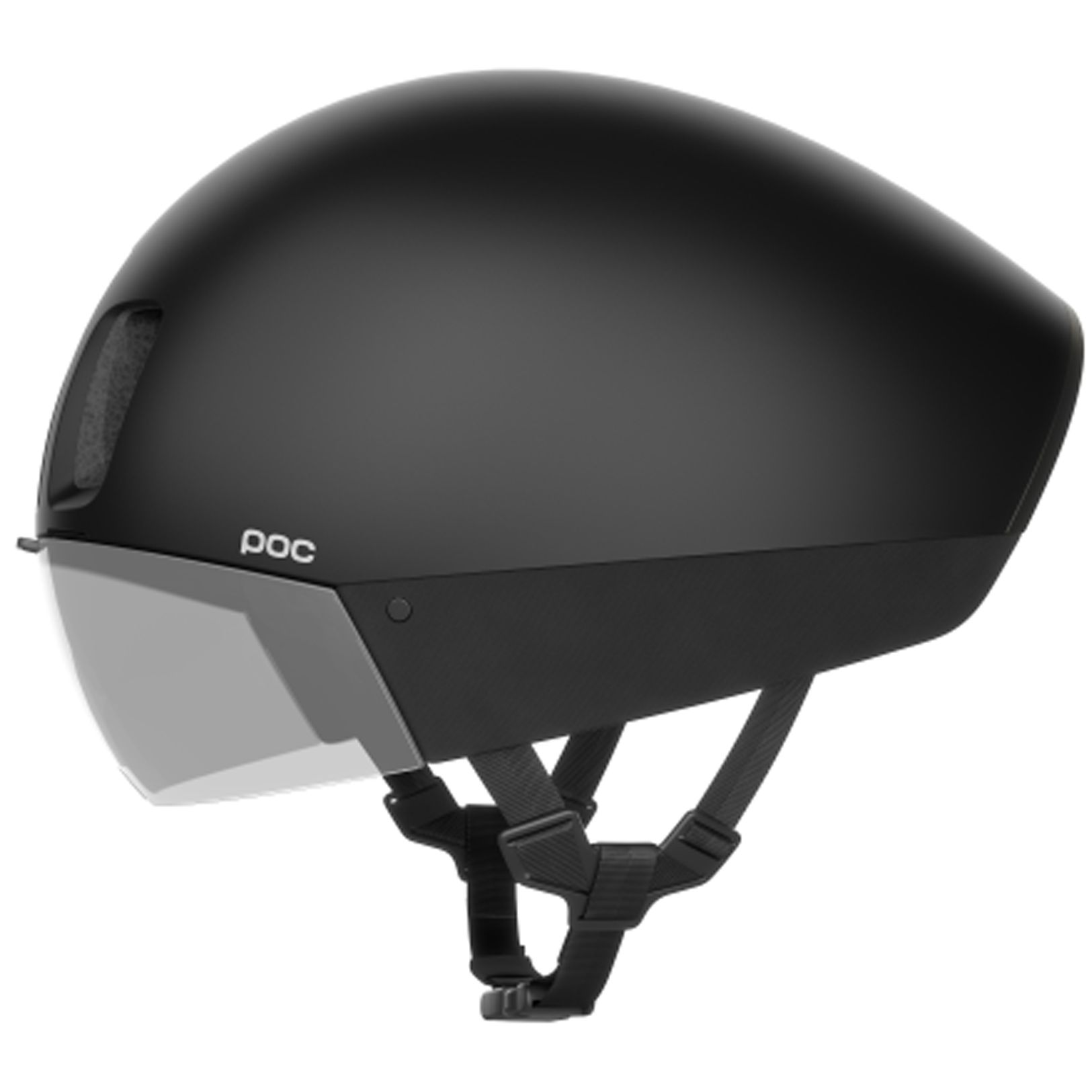
The Procen Air is a time trial helmet adapted for the road, with a visor up front and an over-the-ear design. That means its looks are polarising. In our most recent testing, it scored better without the visor than with it though.

The Van Rysel RCR-F scored well in our wind tunnel test. It's comfortable, reasonably lightweight, and looks great. Most importantly, though, it's a quarter of the price of others here, making it a great buy if you're on a budget.

The Cadence Plus was fast in our test, despite having five huge vents up front. It's not the breeziest helmet out there, but if you want aero performance while still prioritising airflow, this is a great pick.

The Ballista MIPS looks the part and was the second fastest aero road helmet in our test. It's also impressively low in weight at 270g and very comfortable.
Last updated on 05th of November 2025 We went to the wind tunnel and independently tested 47 of the best aero helmets to find out how aero they actually are. The guide was updated to reflect the results of our testing. We also amended the Virginia Tech scores in light of their change in scoring methodology.
Best aero helmets
You can trust Cyclingnews
Best aero helmet overall
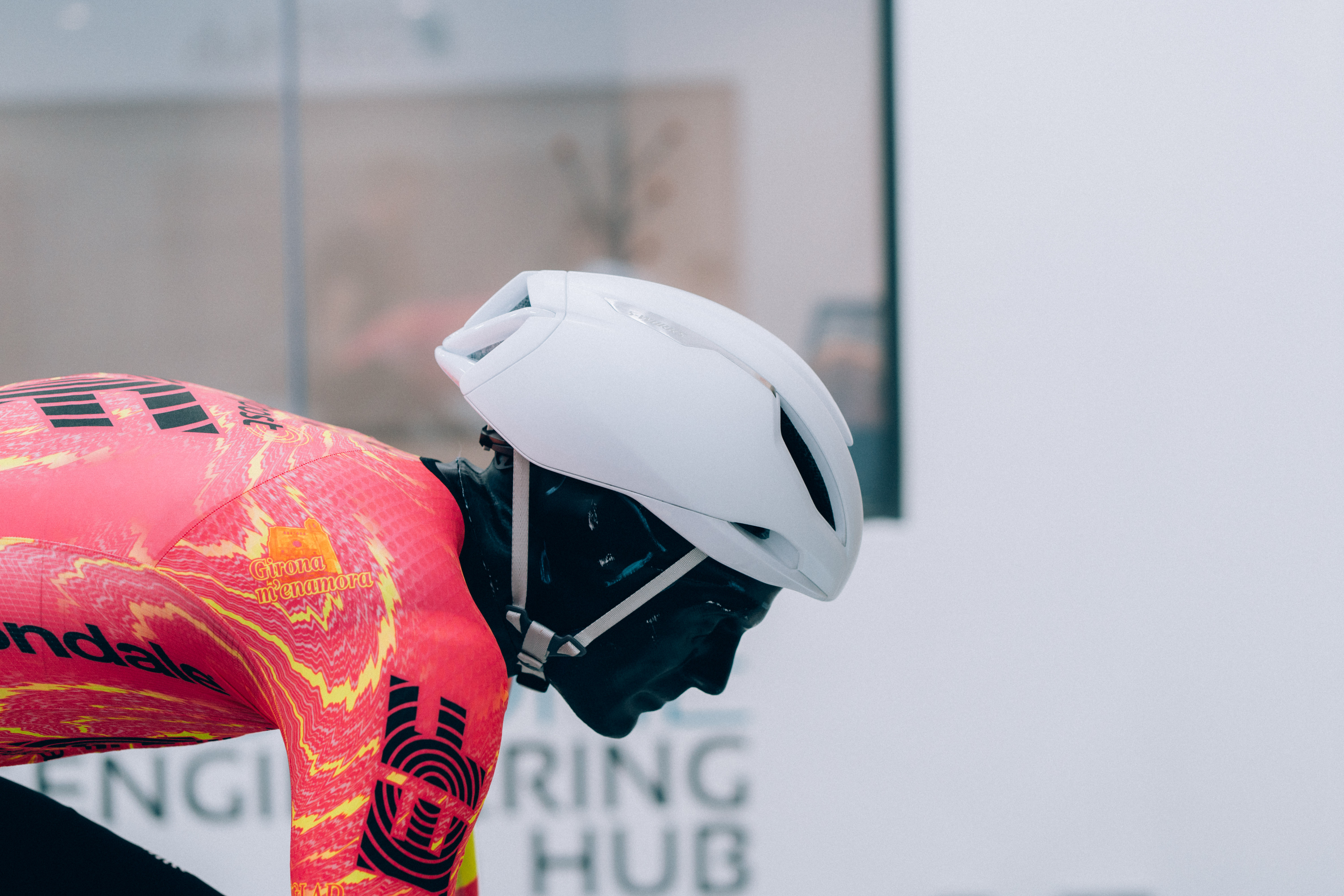
Specifications
Reasons to buy
Reasons to avoid
✅ You want a sleek, road-style look: It's definitely more traditional in appearance but still delivers aero gains.
✅ You wear cycling glasses: It's thoughtfully designed to work seamlessly with all eyewear. The strap is easily adjustable too.
❌ You want the absolute fastest helmet: It's impressively aero. Still, it lost 1.1 watts to the Oakley Velo Mach in testing.
❌ You prefer a budget-friendly option: Premium performance comes at a premium price.
The Specialized S-Works Evade III was fourth in our test, giving away 1.1 watts to the Oakley Velo Mach on average across all four yaw angles.
But beyond the aero performance, it's also super comfortable, lightweight, offers great ventilation, and looks great. It plays well with all cycling glasses and has an easily adjustable strap. The straps themselves are also slightly thinner than on many helmets, meaning less chance of silly tan lines for those lucky enough to ride regularly in sunnier climates.
The S-Works Evade III is first and foremost an aero helmet, but it does everything very well, and for that reason, it's our pick as the best overall. Read more about the Specialized S-Works Evade III in our full review.
Fastest aero helmet on test
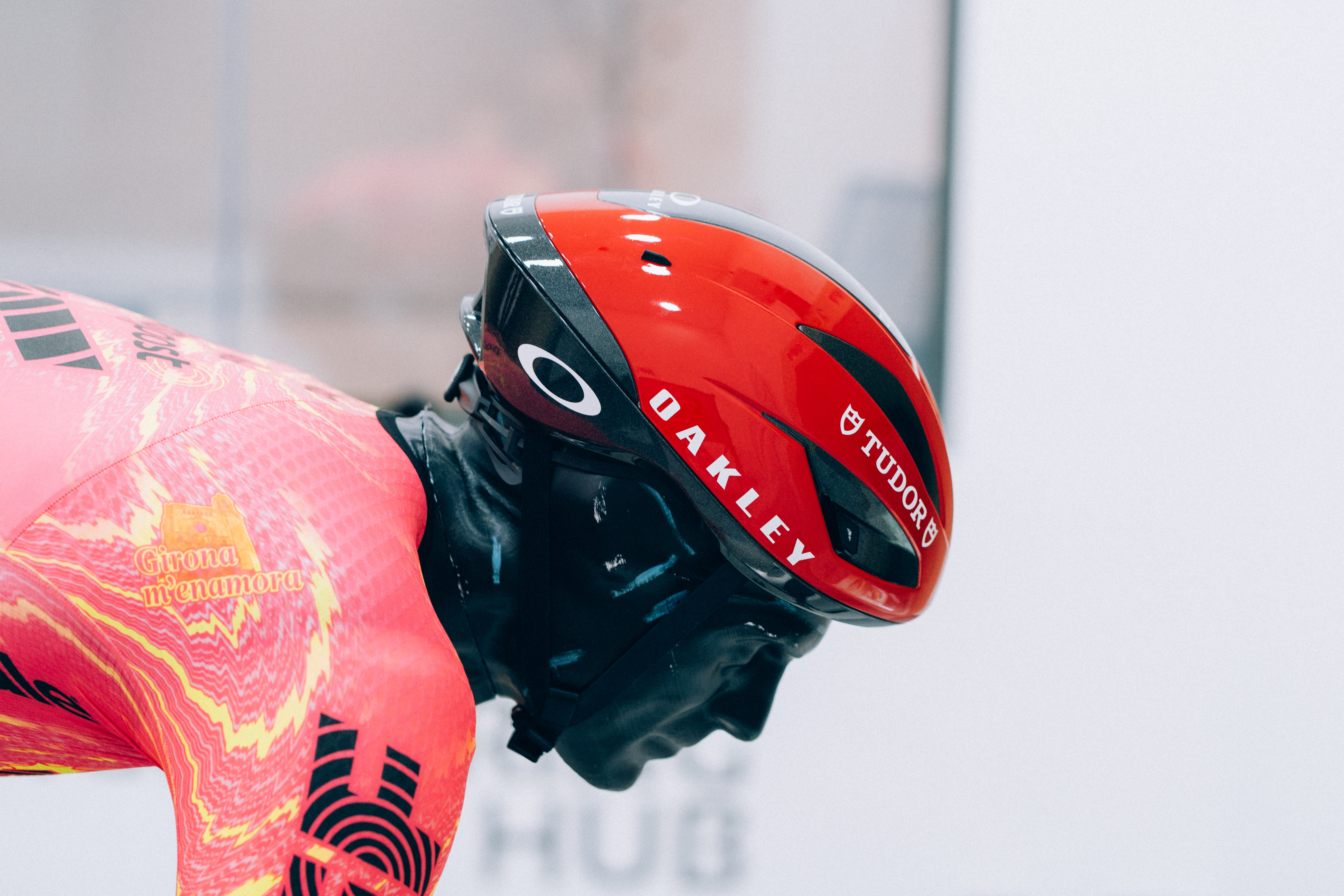
2. Oakley Velo Mach
Specifications
Reasons to buy
Reasons to avoid
✅ You want the absolute fastest aero helmet: The Oakley Velo Mach was the most aerodynamic aero road helmet we tested for this guide, saving up to 8 watts at 40km/h.
✅ You want low weight: The 300g helmet weight is competitive, although at the expense of no additional impact protection.
❌ You want rotational impact protection: The Velo Mach helmet doesn't come with MIPS or other add-on systems.
❌ You are looking for independent safety testing: As yet, there's no Virginia Tech score.
Oakley has upped its helmet game with the Velo Mach, which came out the fastest of all the non-time trial aero helmets we tested in our huge wind tunnel test. First worn in the 2025 season by the Tudor Pro Cycling team, Oakley claims that its fin-like 'flow conditioners' at the helmet's rear reduce drag in a sprint.
Oakley tested the helmet at 70km/h, but we still found it to be the fastest helmet of those we tested at 40km/h and 50km/h, even beating the Giro Aerohead, a dedicated time trial helmet, when the latter was tested without a visor.
Oakley says it's developed a new fit system for the Velo Mach that's more comfortable and reduces pressure points. As you'd expect, it's not neglected glasses storage either, with front vents positioned for eyewear docking.
Oakley addresses sweat build-up too, with a lining fabric that's claimed to wick sweat away. It's even included on the helmet straps. There's no MIPS liner or other rotational impact protection and, as with Oakley's other helmets, no Virginia Tech testing though.
Fast for head-up riding
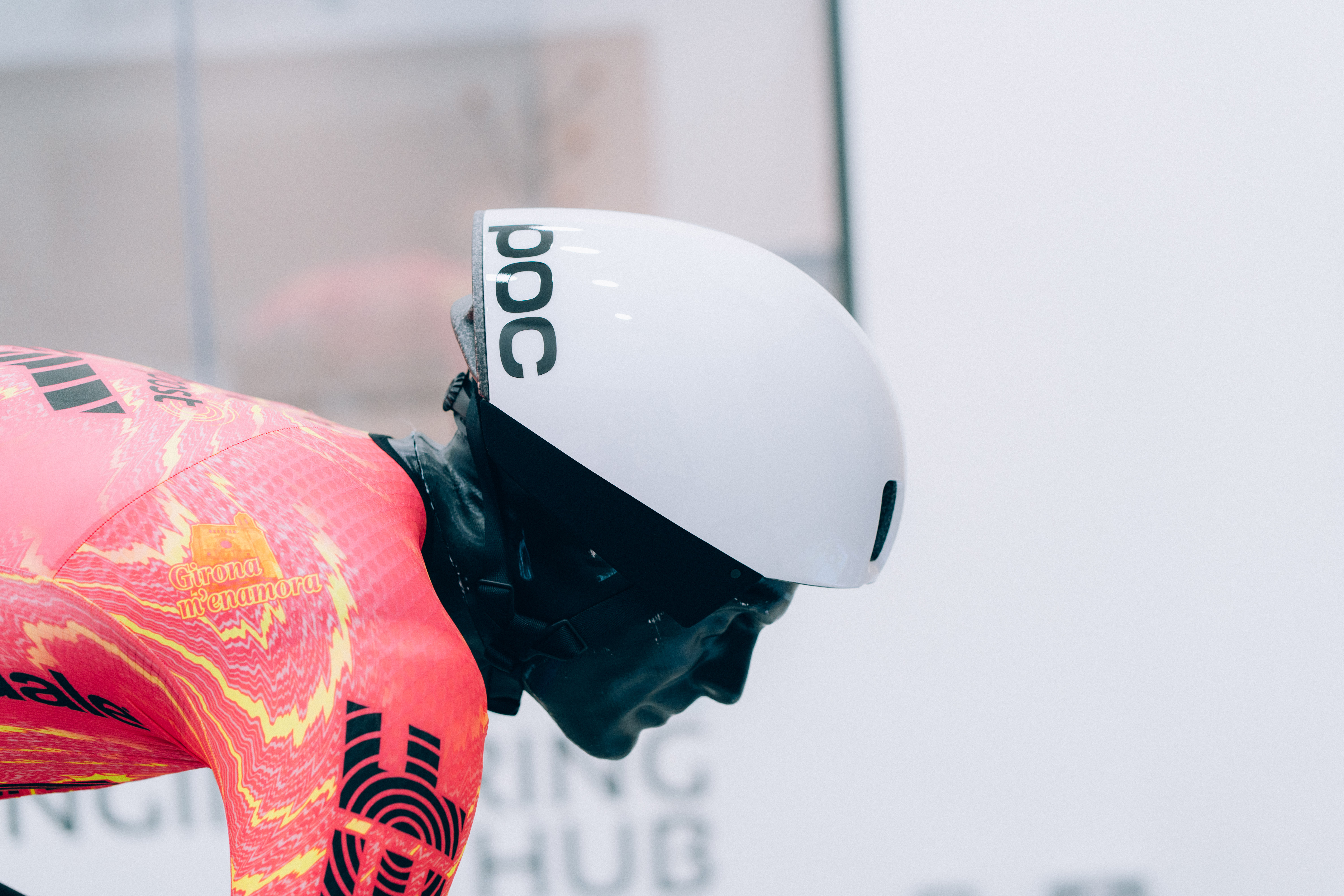
3. POC Procen Air
Specifications
Reasons to buy
Reasons to avoid
✅ You want head-up aero performance: The POC Procen Air was the most aerodynamic in our previous test in a more head-up ride position.
✅ You wear prescription glasses: The full visor design allows for comfortable use of prescription eyewear underneath.
❌ You expect significant noise reduction: While slightly better in head-on airflow, it was marginally louder than other helmets overall.
❌ You want more standard road bike looks: The bowling ball look, with the tops of the ears covered, may look a bit odd on a more leisurely ride.
In our previous helmet wind tunnel test, the POC Procen Air was the fastest of 24 helmets when worn with its visor and the third fastest without. That was with a human rider in a more upright ride position though, while in our more recent test with a head-down mannequin, the Procen Air without a visor slipped down the rankings, coming in ninth among 41 aero road helmets tested (and 15th when time trial helmets are included). Strangely, it was less aero with a visor in our test, dropping to 13th place.
There are other things to think about than aero performance though, so we took the helmet out into the real world to see how it fared on the road, and a few things stand out. Despite the full visor and ear coverings, the ventilation was surprisingly good thanks to the three large holes up top. With the over-the-ear design, much is said about the potential for noise reduction, and although marginally better in head-on airflow, I found it marginally louder than other helmets on average. That's not a major issue, but don't buy it if you're hoping for this.
I'm not a huge fan of wearing contact lenses, but as a slightly blind human, I need prescription glasses, and I really like that I can fit them comfortably beneath the visor. If you'd prefer to shun the visor though and show off your best cycling glasses, rest assured that it's still among the fastest out there (although it will cost you 10 seconds in that 40km time trial).
Best value
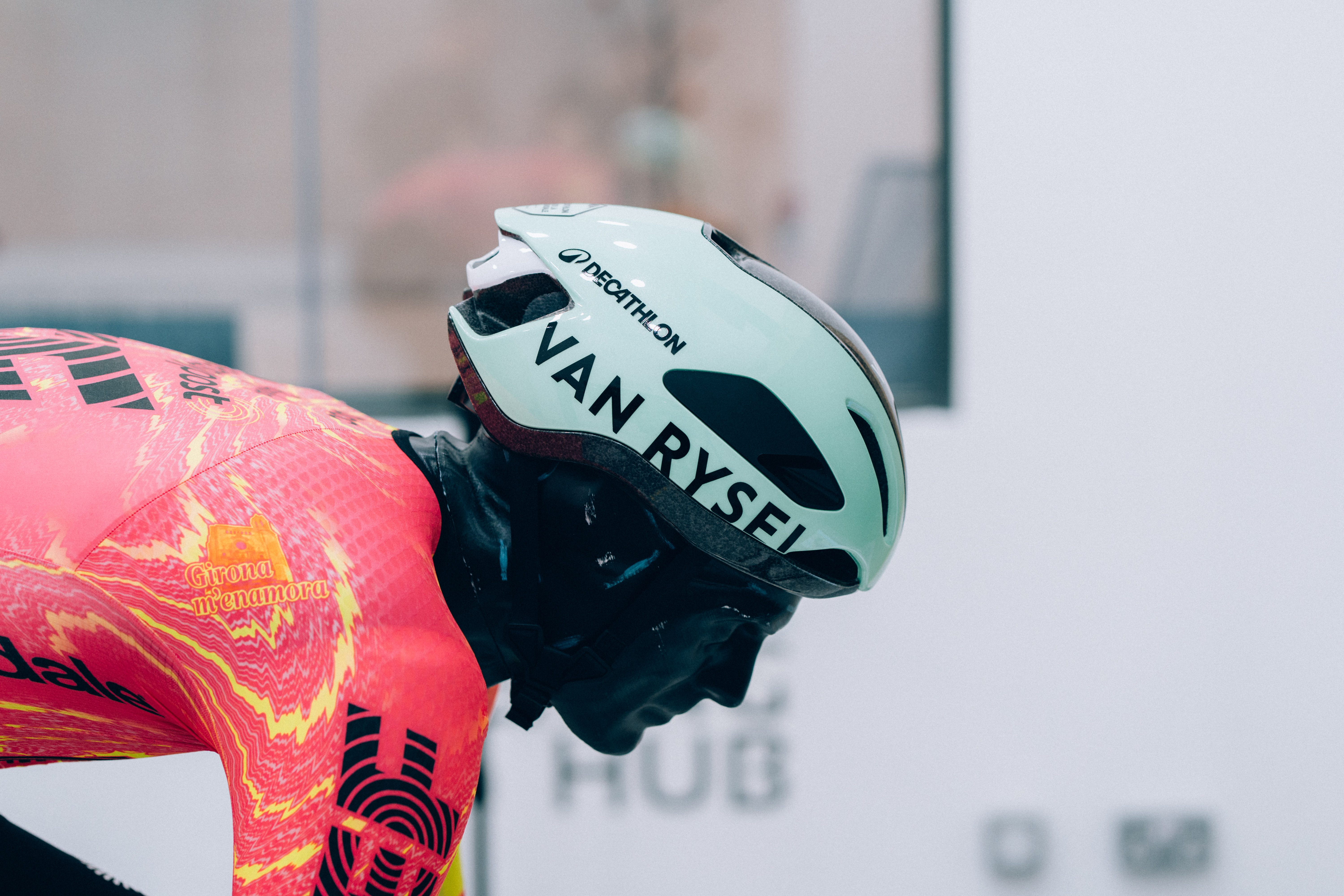
Specifications
Reasons to buy
Reasons to avoid
✅ You want strong aero performance at a fantastic price: The RCR-F finished 8th in wind tunnel testing, outperforming more expensive helmets in this guide.
✅ You need a lightweight, well-ventilated helmet: We think the RCR-F offers great comfort and airflow.
❌ You want the highest-quality construction: We found the materials feel lower in quality compared to pricier rivals.
❌ You rely on third-party safety ratings: While the RCR-F meets industry standards, there’s no independent testing from Virginia Tech or similar organisations as of yet.
Like all of Van Rysel's product line, the RCR-F helmet (formerly called the FCR) aims to compete with the best while keeping a keen eye on price. In our experience, it's successfully done that, because it came in a strong 8th place in our wind tunnel test ahead of helmets such as the POC Procen Air, Met Manta and many more.
It's comfortable, lightweight, and well-ventilated too. The construction does feel somewhat lower in quality than the more expensive competition, but that's no surprise given it's less than half the price of most, and a quarter of the price of the POC Procen Air.
The helmet we rode in for our review has no additional rotational impact protection, but in many territories, it's possible to buy it with MIPS added in. All helmets must meet the same safety standards, Van Rysel included, so as far as the industry-mandated tests go, it's as safe as it needs to be. There's no third-party testing on it so far from the likes of Virginia Tech, though, so we don't know how far beyond those minimum requirements it goes.
Check out the Van Rysel RCR-F aero helmet review for more.
Best aero helmet for hot weather

Specifications
Reasons to buy
Reasons to avoid
✅ You prioritise keeping cool: The Cadence Plus is one of the best-ventilated options in this guide. We'd recommend it for anyone riding in hot conditions.
✅ You appreciate convenience: It even features a handy magnetic buckle for easy one-handed fastening.
❌ You’re looking for the most budget-friendly helmet with a rear light: Admittedly, Lazer’s Vento Kineticore offers a similar feature at a lower price.
❌ You’re looking for a high Virginia Tech score: Virginia Tech has revised its scoring and the Cadence Plus is now rated lower.
Aero helmets have a reputation for being hot. They're much better than they used to be, but some still perform better than others, and one of our favourites for ventilation is the Scott Cadence Plus. It also scored decently in our aero testing, ranking 11th of 41 non-TT helmets tested.
Adding to your safety - or at least, your visibility - is the included rechargeable light that clips onto the rear of the helmet. Lazer's Vento Kineticore offers a similar thing for a slightly lower total price, so that's a good choice if you value this feature above all else. You can buy an aftermarket light to clip onto the Giro Eclipse aero helmet too.
Inside, you get MIPS Air Node rotational impact protection, the same as you'll find in the Evade and a lot of other high-end helmets nowadays. Strangely, the Cadence Plus with MIPS has a Virginia Tech rating of just two stars, while the non-MIPS helmet has three stars. That's down from five stars before Virginia Tech amended its rating algorithm.
Rounding off the Cadence Plus is a magnetic buckle, which means it's easy to do up one-handed. It also comes in a trio of colours, including a garish purple if that's your thing.
Read more about why the Scott Cadence Plus is the aero helmet we are reaching for in hot weather.
Best aero helmet for lightweight performance
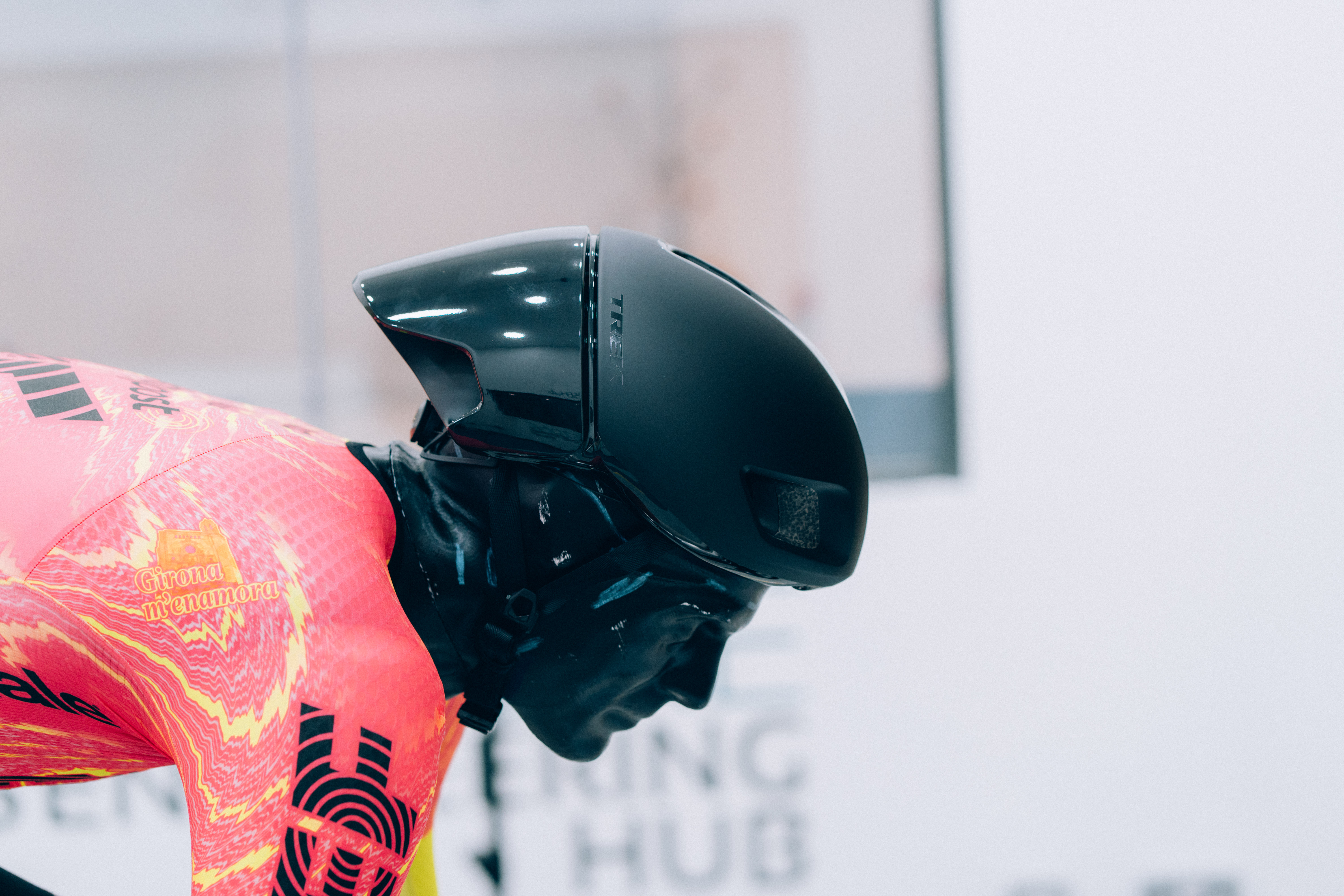
Specifications
Reasons to buy
Reasons to avoid
✅ You prioritise a lightweight design: At 270g, it's among the lightest aero helmets.
✅ You value an aggressive design: Trek's Ballista, with its aero tail, looks the part.
❌ You don't like the separate tail: It's quite easy to detach, even when you don't want it to.
❌ You want the lightest helmet available: If all you care about is weight, vented helmets such as the Abus Airbreaker and Met Manta might be better options.
Trek's Ballista achieved the second-highest score for a helmet in our wind tunnel test and is also impressively low in weight, while still achieving a high safety rating thanks to its included MIPS Air low-profile impact protection.
While many aero helmets are quite enclosed, the Ballista MIPS has three large front vents, with the outer two also offering glasses storage, and a fourth on the helmet's crown. At the rear, there's a large area of exhaust ports hidden under the tail extension, which can be removed for travel or storage.
The Ballista MIPS is among the lightest aero helmets we've tested. Trek claims 275g but we weighed our wind tunnel sample at 270g and our review sample in size M at just 260g, with the subjective feel even lighter. There's great airflow and adjustability too.
Read our full Trek Ballista MIPS helmet review for more.
Best aero helmet for comfort
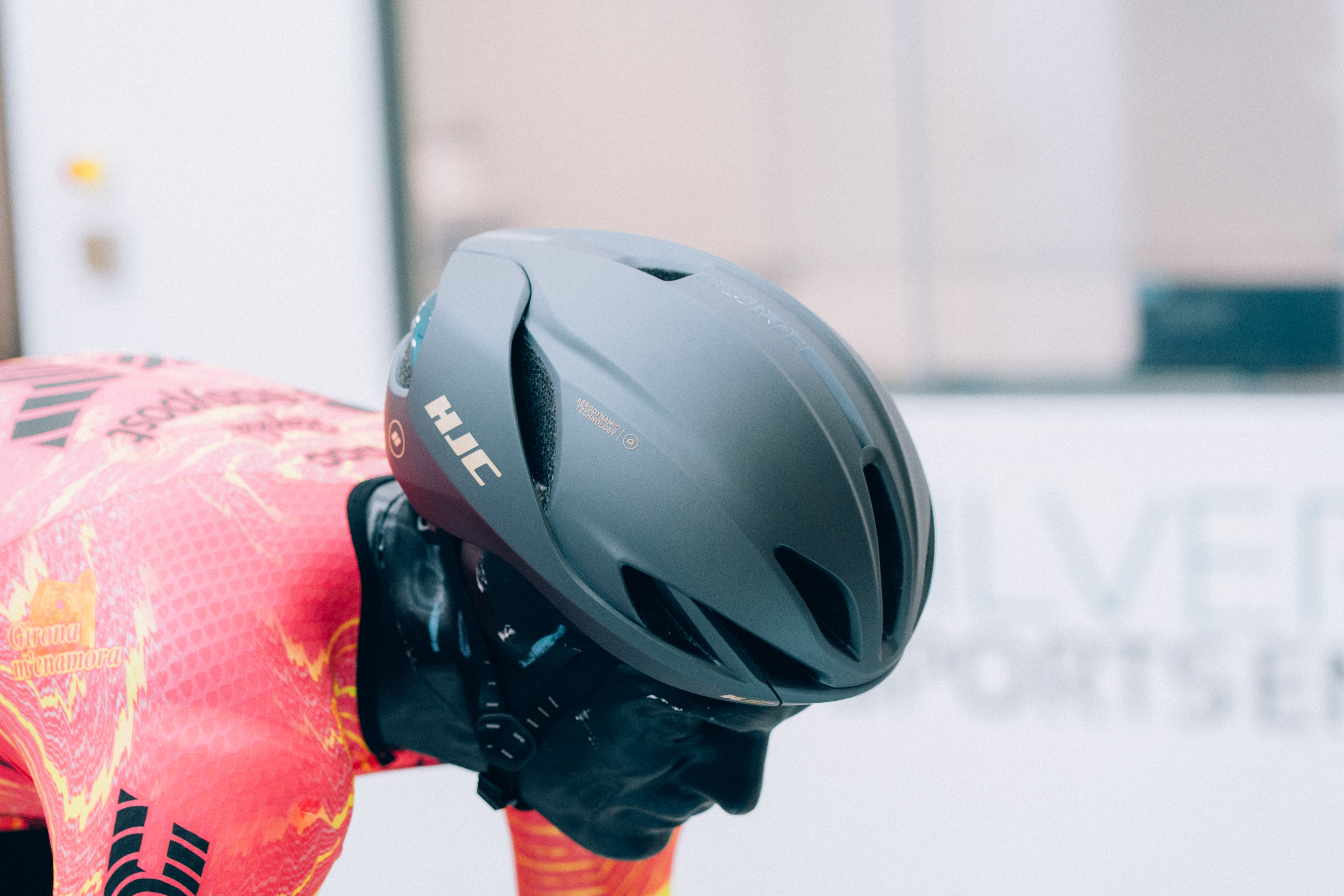
7. HJC Furion 3
Specifications
✅ You value comfort: The HJC Furion offers an excellent fit with a well-designed rear cradle and easily adjustable straps. It's well-ventilated too.
✅ You're looking for a compact, low-profile design: The SLID impact protection is unique to HJC and looks impressively compact.
❌ You want an easily adjustable head retention system: The rear dial is a bit tricker to adjust than other helmets.
❌ You want independent crash testing: HJC hasn't submitted any of its helmets for Virginia Tech testing.
The HJC Furion, now in its third iteration, is a very comfortable, well-ventilated helmet. The low weight and well-considered shape allow it to sit well on the head. HJC makes motorcycle helmets too, in its native South Korea, so it understands how to engineer a good fit. The brow pad is quite low profile in terms of its shape, but it's nice and soft to the touch. The rear dial is a little bit difficult to grasp, especially with gloves, but it doesn't 'lock' the retention in place. Rather, it has a bit of 'give' which then springs back, allowing the helmet size to expand and contract as you crane your neck.
Rather than MIPS, the Furion 3 uses HJC's own SLID gel liner. The SLID internal rotational impact protection has a minimalist design and basically works via two small gel pads, which means there's no hard material against the top of your head, further boosting comfort. It serves a similar function to MIPS, although the Furion hasn't been tested by the Virginia Tech helmet lab, so there's no independent verification of its effectiveness.
The internal front-to-rear channelling ensures good airflow and the drag numbers from our own aero testing are pretty good too. Coupled with a competitive price, this makes HJC's helmet an attractive option.
Also consider
The purpose of this buying guide is to help you buy the best aero helmet, not just 'any aero helmet', so we've spent months researching and testing helmets to try and tease out the very best from the rest.
Landing on the final options for this list required a ton of testing with a wide variety of helmets. Most of them are good, many of them great, but only a few can be deemed 'the best'.
Aside from the helmets listed above, we have tested dozens more. Those in our latest round of testing are listed below, but that's by no means an exhaustive list.
If we tested any one of them in isolation, we'd have been happy with them, but the reason they're not featured more prominently here is that they didn't shine in any particular way, or another shone more brightly.
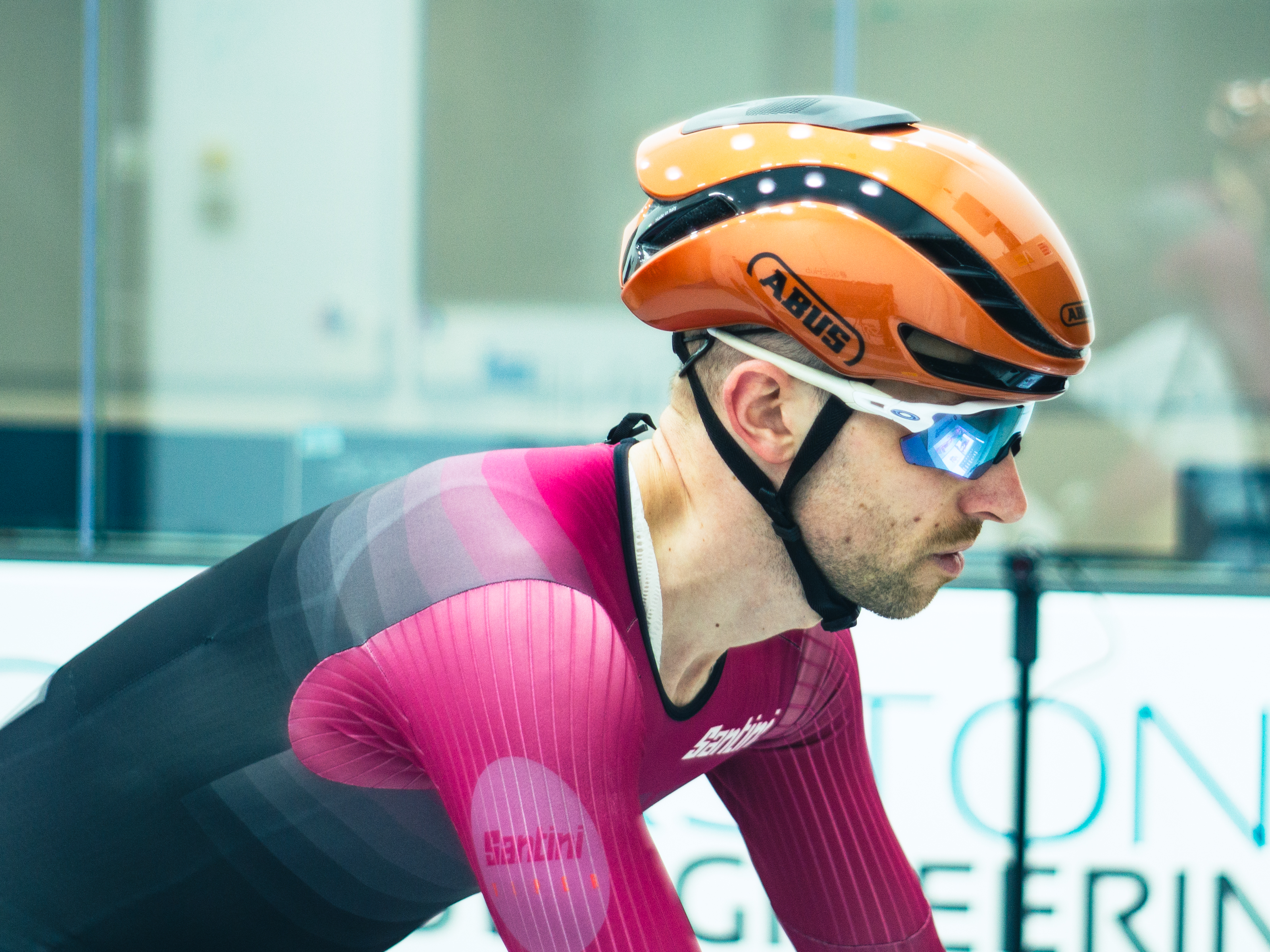
✅ You want improved ventilation
✅ Secure storage for eyewear
❌ Aero performance isn't the best
An aero-styled helmet with improved ventilation compared to its predecessor and excellent quality of construction.
Why didn't it get a place? It finished a pretty disappointing 17th in our aero test and doesn't stand out in any one way. It's by no means a bad helmet, but in our group test, others fared better.
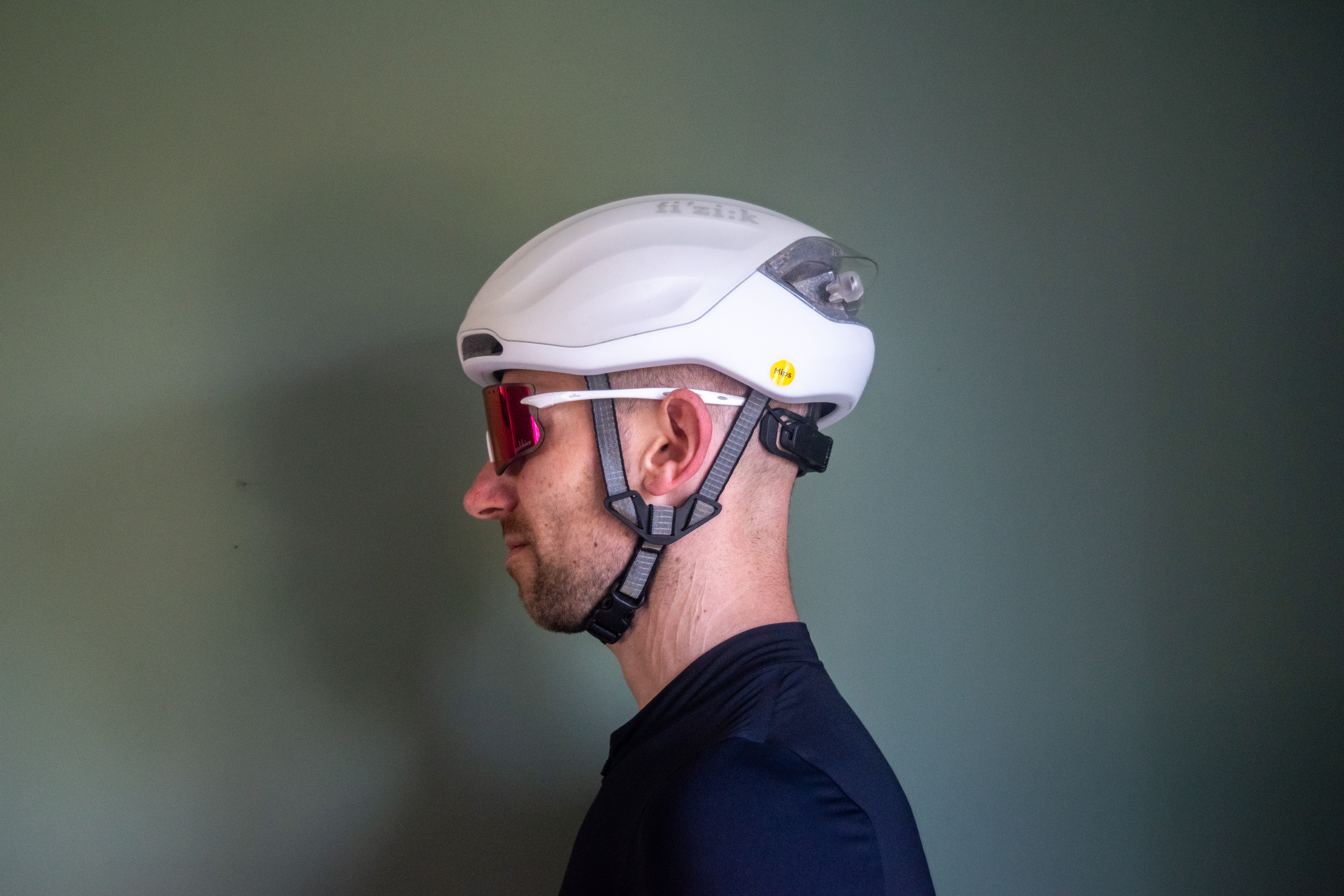
✅ Comes with a light in the box
✅ High Virginia Tech score
❌ Aero performance is unproven
Part of Fizik's first foray into cycling helmets, the Kudo Aero has a low-profile shape and includes MIPS Air Node rotational impact protection. Fizik includes a removable USB rear light with every helmet.
What it doesn't provide is any aero data, and we've yet to visit the Silverstone wind tunnel to collect our own. We found the Kudo comfortable, though a little warm on climbs on hot days.
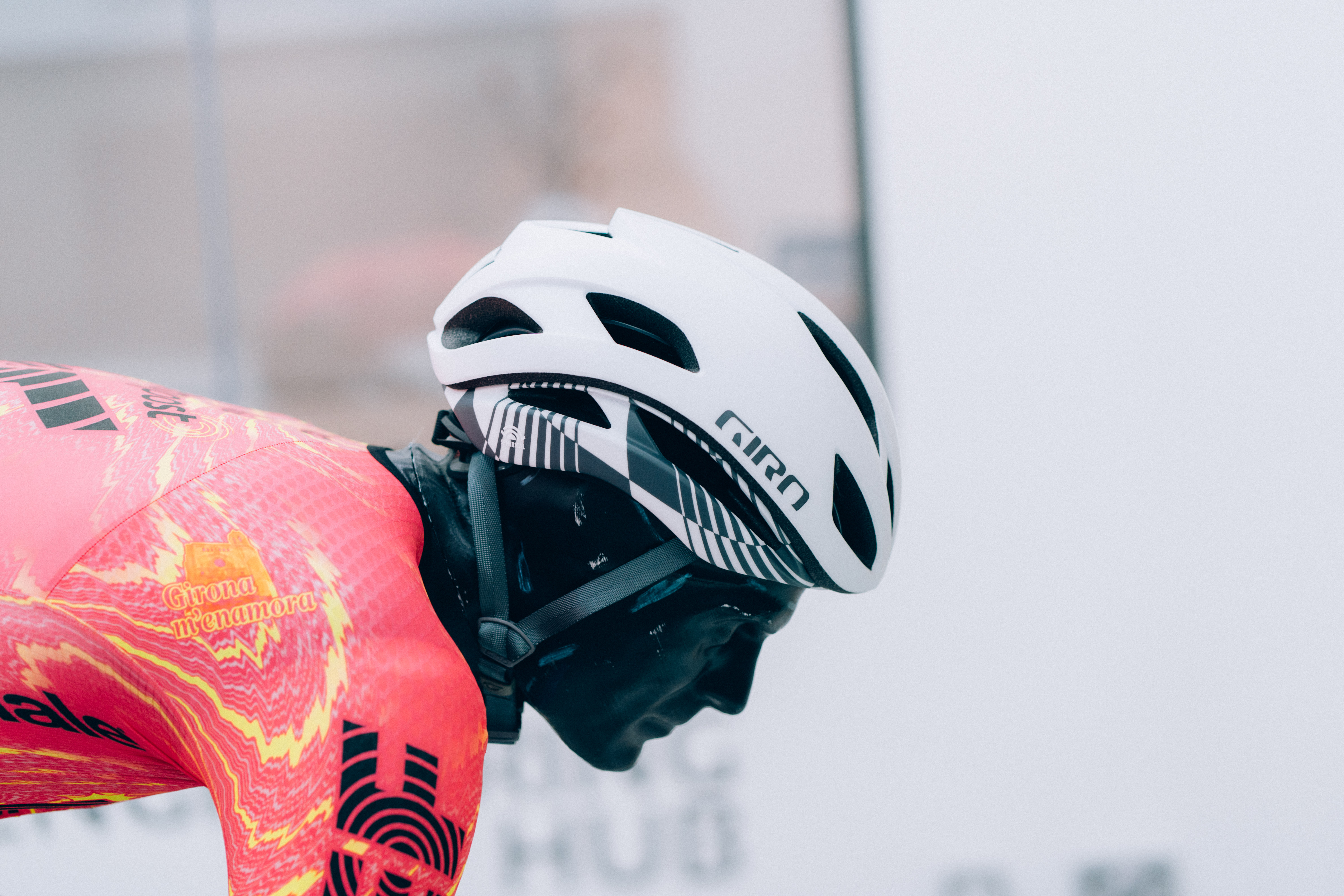
✅ Integrated MIPS system
✅ Add-on rear light option
❌ Low aero score
Giro's MIPS Spherical system embeds the sliding plane between two EPS foam layers, so it's well concealed and leads to much helmet comfort.
This does add to the weight though and the helmet's 34th aero ranking is a little disappointing. There's good adjustability though.
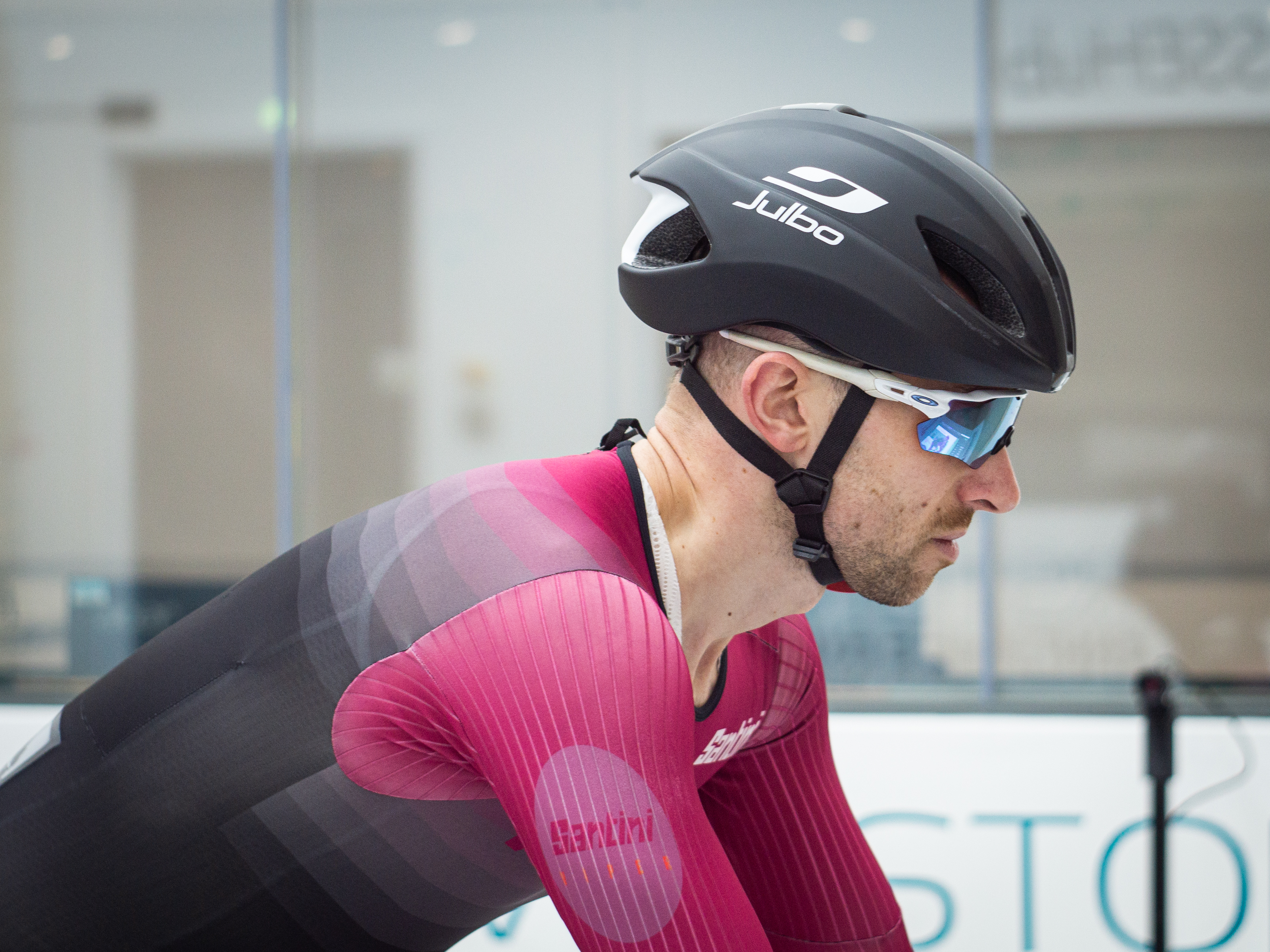
✅ Affordable ero performance
✅ Lightweight aero helmet
❌ Sizing comes up on the small side
❌ Below average ventilation
A pretty decent option at a decent price, the Julbo Sprint performed well in our initial round of aero tests, finishing 9th of 23 helmets.
It's probably our second choice 'budget' aero helmet, as it's only a little more expensive than the Van Rysel FCR and only marginally slower.
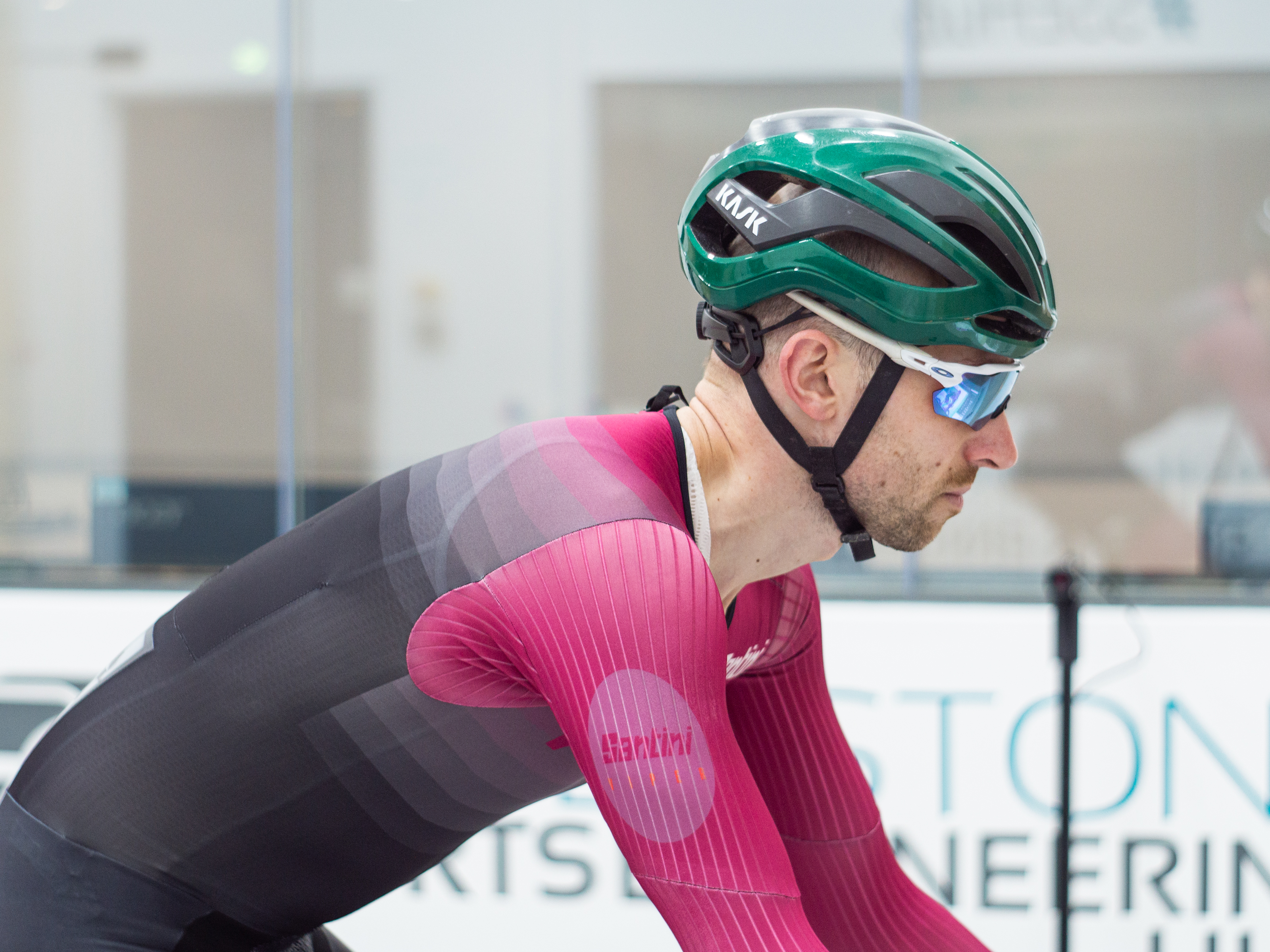
✅ Extensive rear cradle adjustment
❌ Overly absorbent padding
The Kask Elemento is a helmet packed with new tech, such as a low-profile carbon fibre shell and 3D-printed padding, both of which supposedly improve ventilation.
In our experience, however, the ventilation is still below that of the competition, the aero performance wasn't great at 30th in our test, and the price is huge.
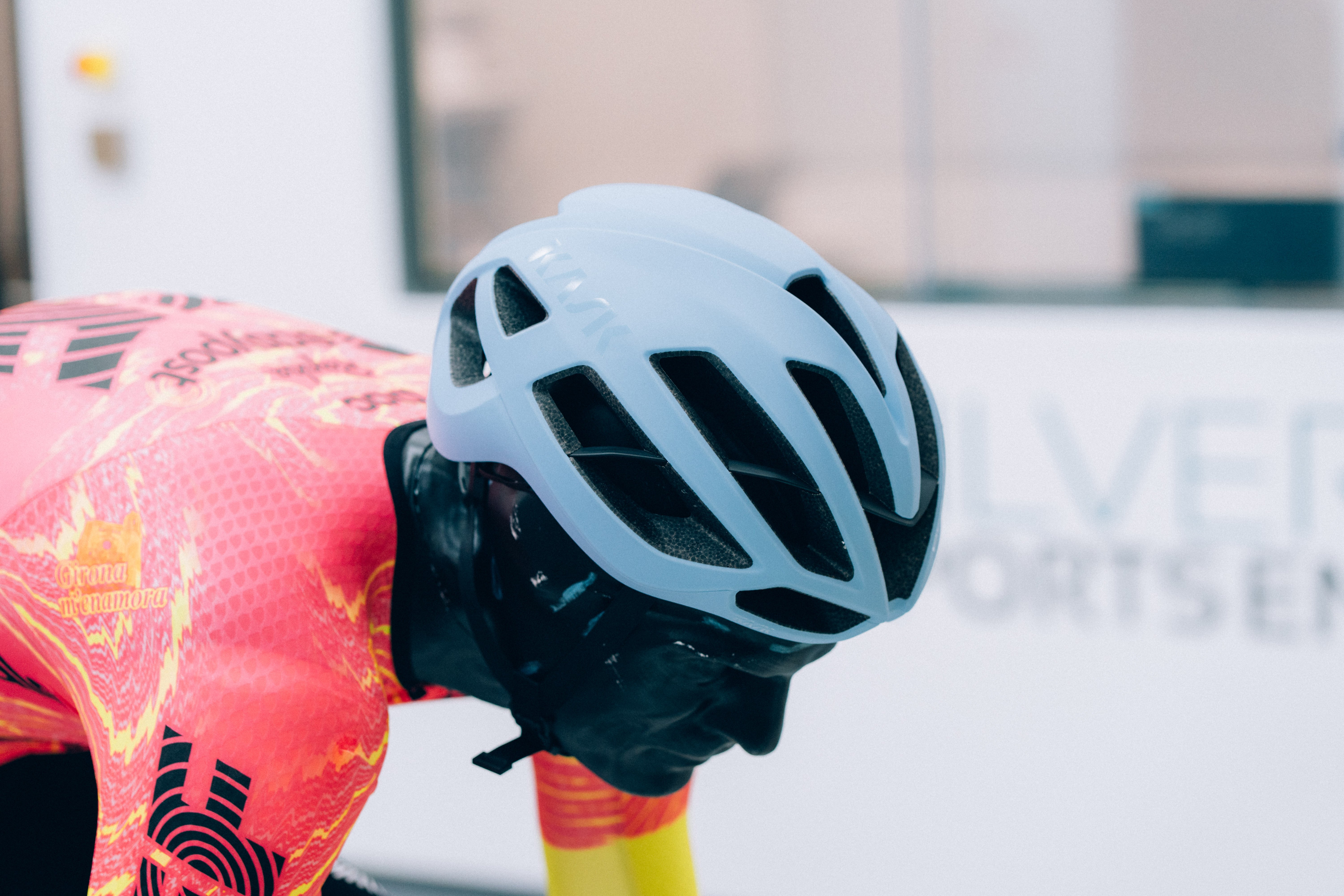
✅ Well-ventilated all-rounder
❌ Doesn't excel in aerodynamics
The Kask Protone Icon is the evolution of the hugely popular original Protone. It boasts large vents up front for ventilation, a rounded rear shape for aero, no matter the head position, and a leather strap that aids comfort.
It's more of an all-rounder, and it's a good one, but it didn't shine in any of our recent tests.
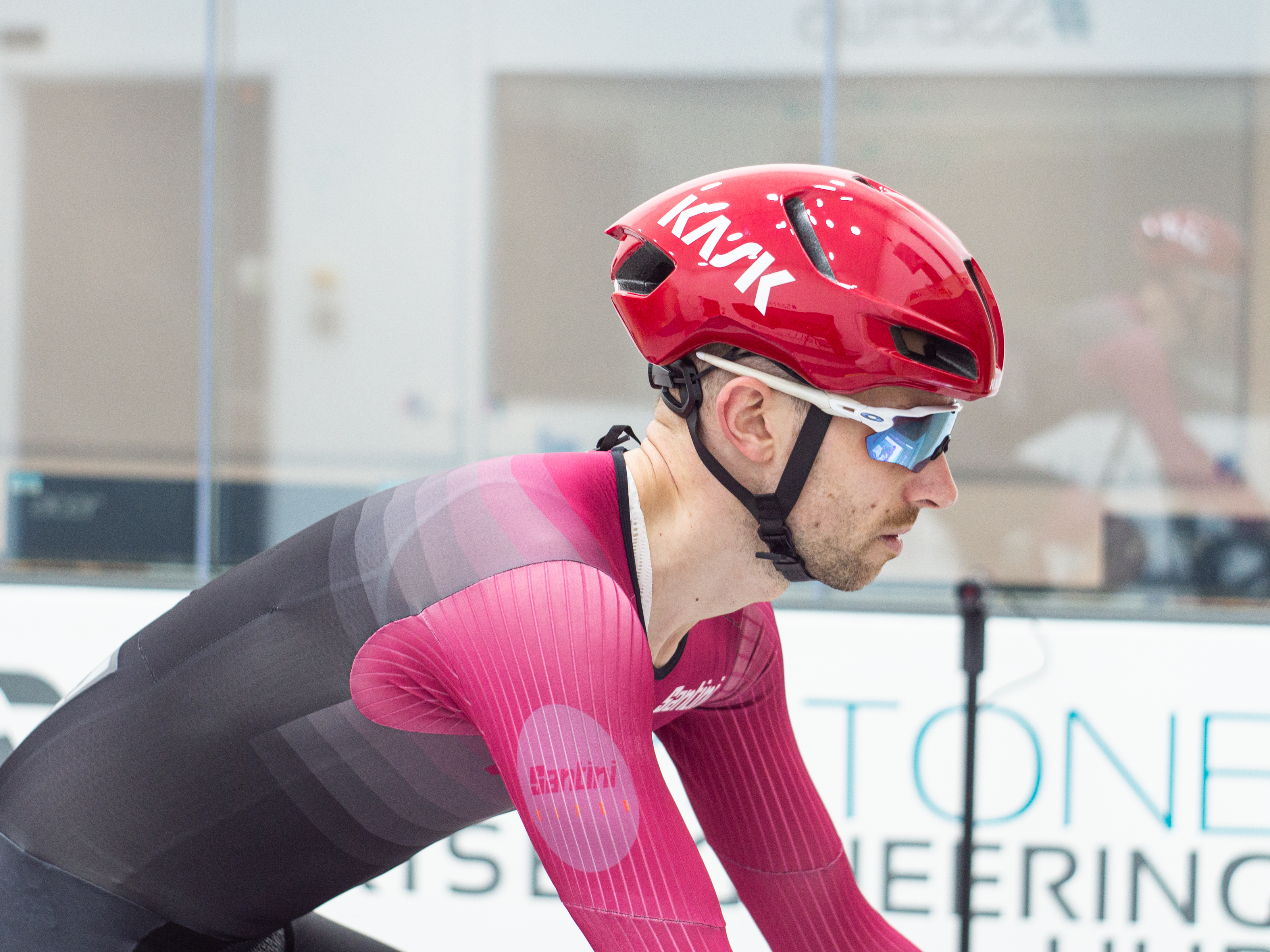
✅ Well padded, comfortable fit
❌ Lacks stand-out aero performance
The Utopia Y is the evolution of the original Utopia. It finished a good 6th in our wind tunnel test, and we found it comfortable, but others performed slightly better in our test.
The quality of construction feels slightly less than the competitors, and although Kask tests to WG11 standard, there's no third-party testing to back up the safety claims.
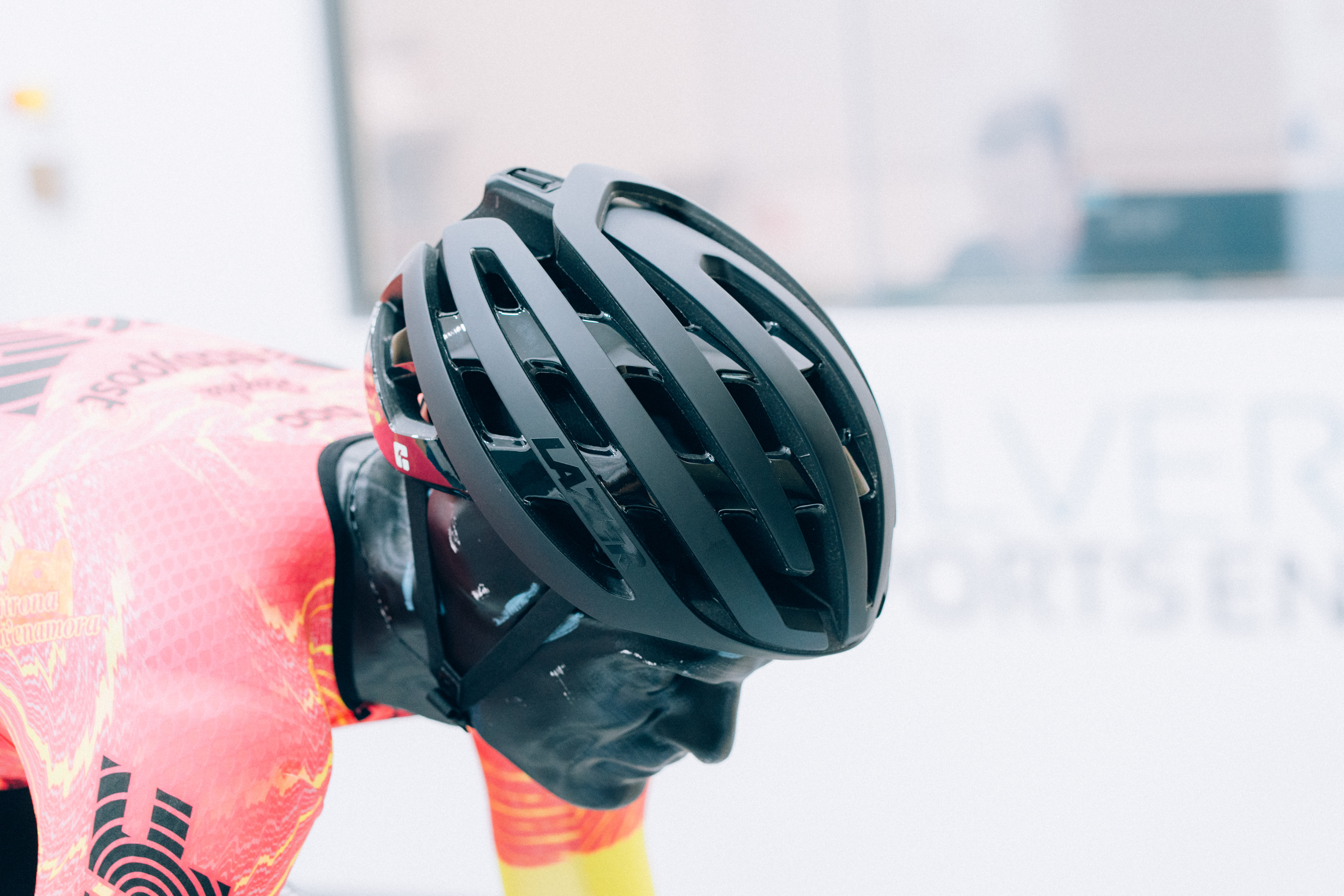
✅ Classic vented design
✅ Low weight
❌ Least aero helmet in our test
The Z1 shows how far helmet aerodynamics have progressed since the original Z1 was launched in 2013. Back then, helmet design was all about ventilation and low weight.
The new KinetiCore version retains those features, but at the expense of 0.74W extra drag over our baseline, making it the least aero helmet in our test.
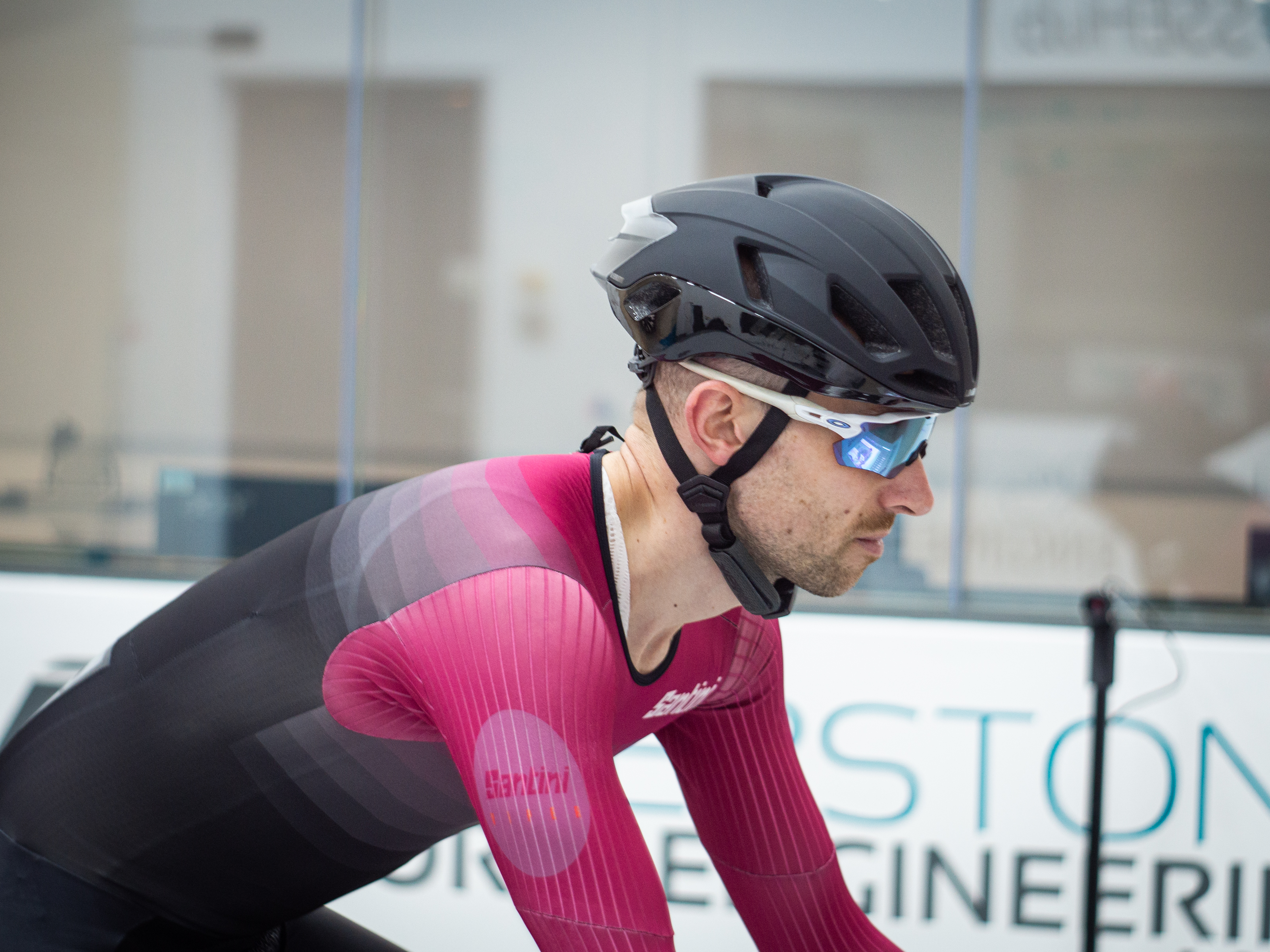
✅ Fidlock magnetic buckle is easy to use
❌ Runs slightly small
Finishing a below-par 16th of 23 in our first wind tunnel test (with the removable aero fairing fitted), the Air Atlas is not the fastest helmet around. It also tends to size up a bit small in our experience.
When reviewing, we did appreciate the magnetic buckle, the secure storage, and the Mips Air Node rotational impact protection though, but ultimately felt that others do a better job for less money.
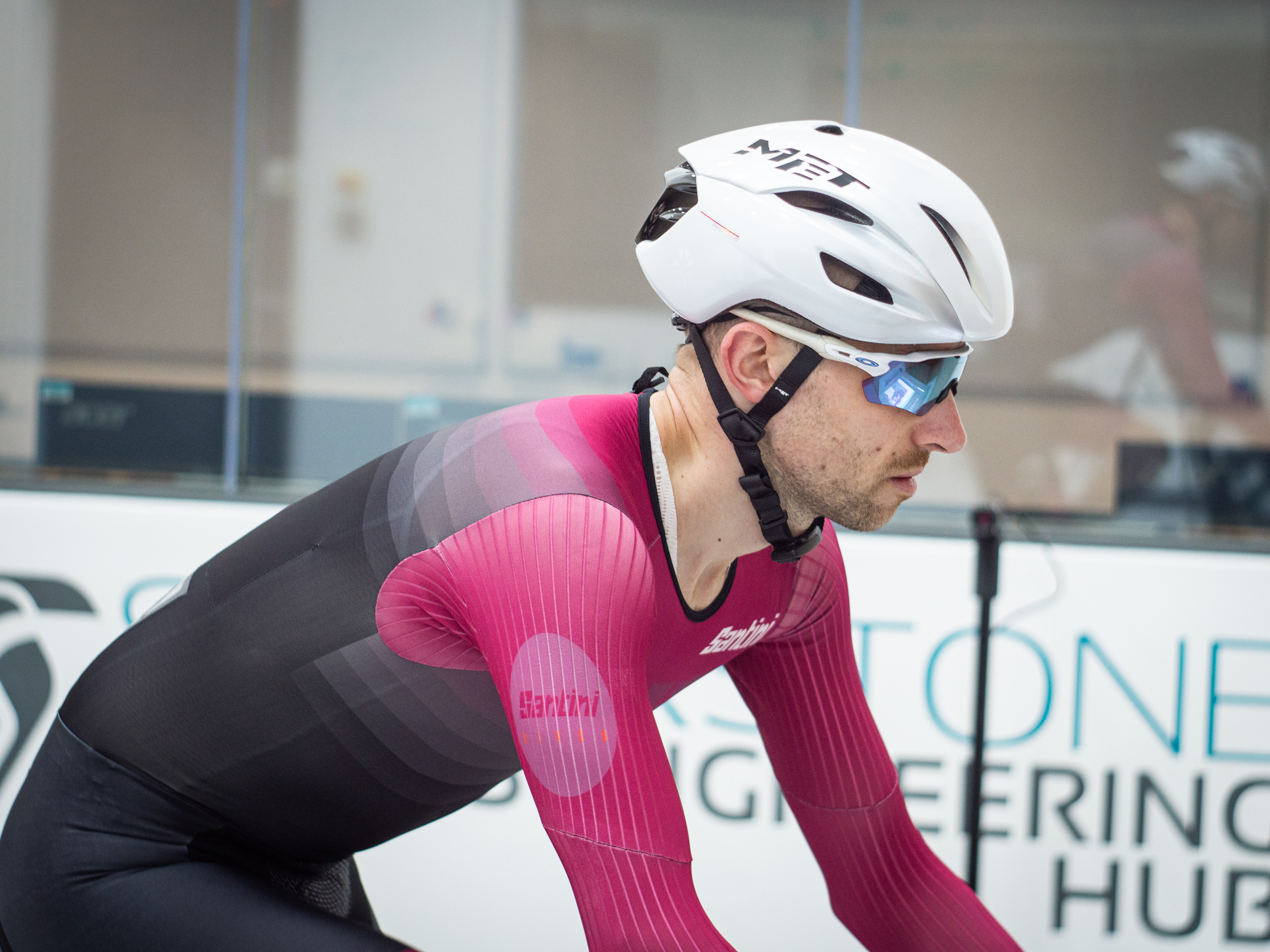
✅ Sleek, well-fitting design
❌ Mid-pack aero performance
The Manta is the helmet that Tadej Pogačar tends to use. It is a good aero all-rounder, looks sleek, fits well, has a magnetic buckle, and doesn't actually cost as much as many of the competitors.
It finished a mid-table 16th place in our test and is all-round a decent helmet, but ultimately others performed better.
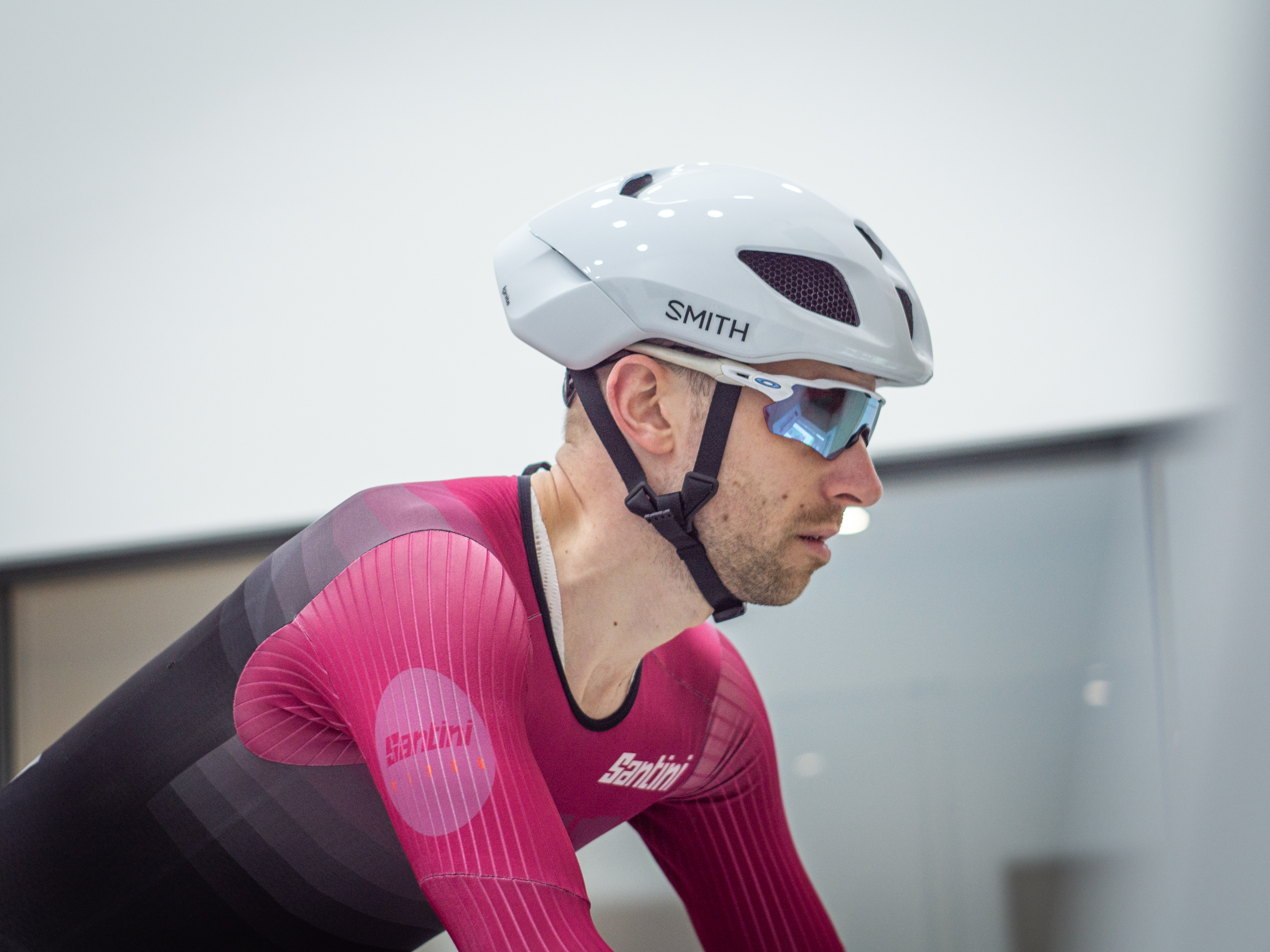
✅ Koroyd crumple zones
✅ Decent aero performance
❌ Less ventilation
Smith's biggest differentiator is the use of Koroyd impact protection tech, which mimics dozens of plastic straws stuck together, offering a crumple zone in the event of a crash.
It performed well in our wind tunnel test, coming 5th and saving 6.8W versus the baseline, but I found the MIPS liner catches my hair, and it's not the most breathable in warm weather.
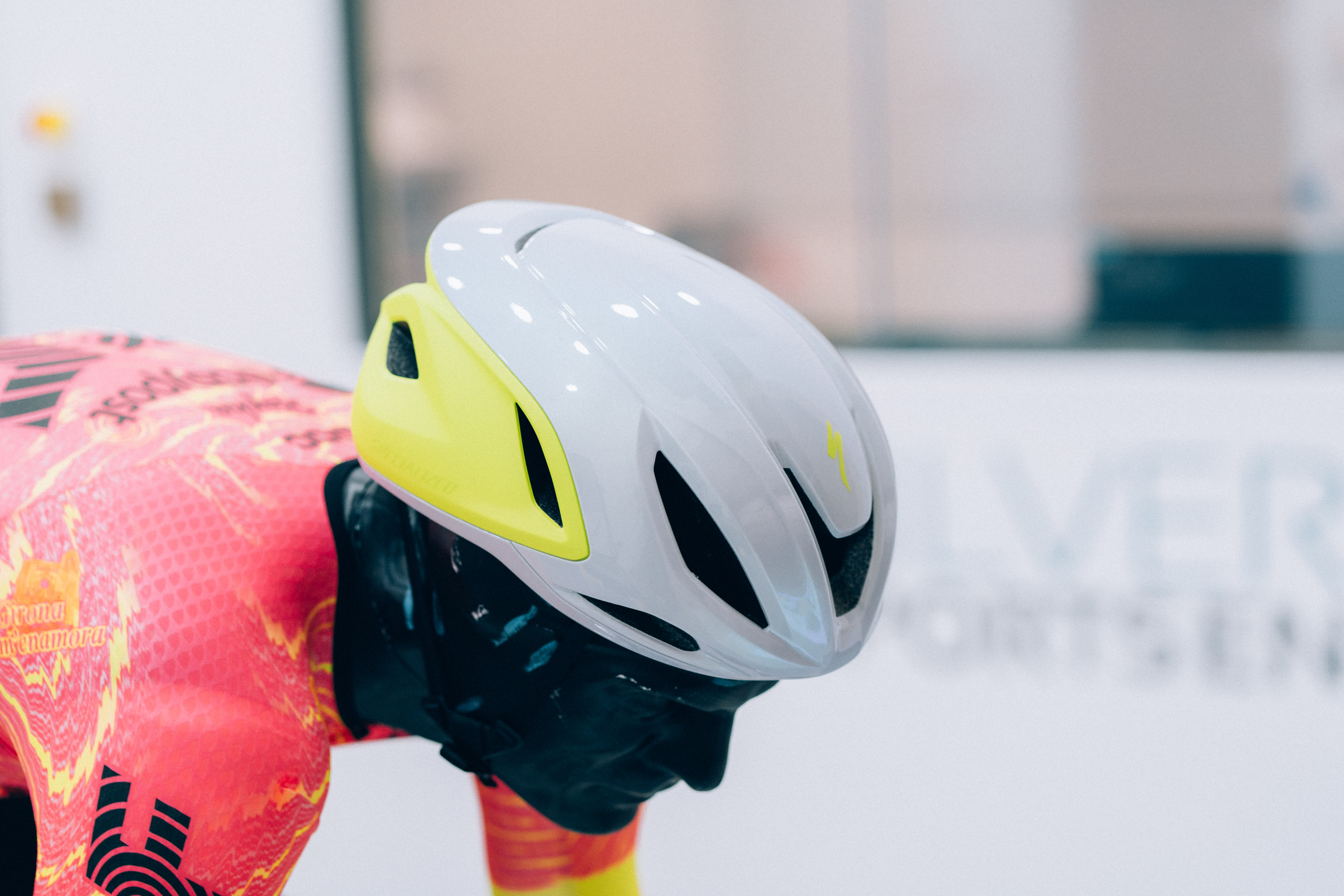
✅ Affordable aero-style helmet
❌ Unverified aero performance
The Propero 4 is a more affordable option from Specialized, but one that pulls its weight well. Despite its semi-aero design, it was 15th fastest in our test, saving 4.88W over the baseline.
Based on the price and the on-bike performance, there are others we'd choose over it, but it's a good contender at this price point.
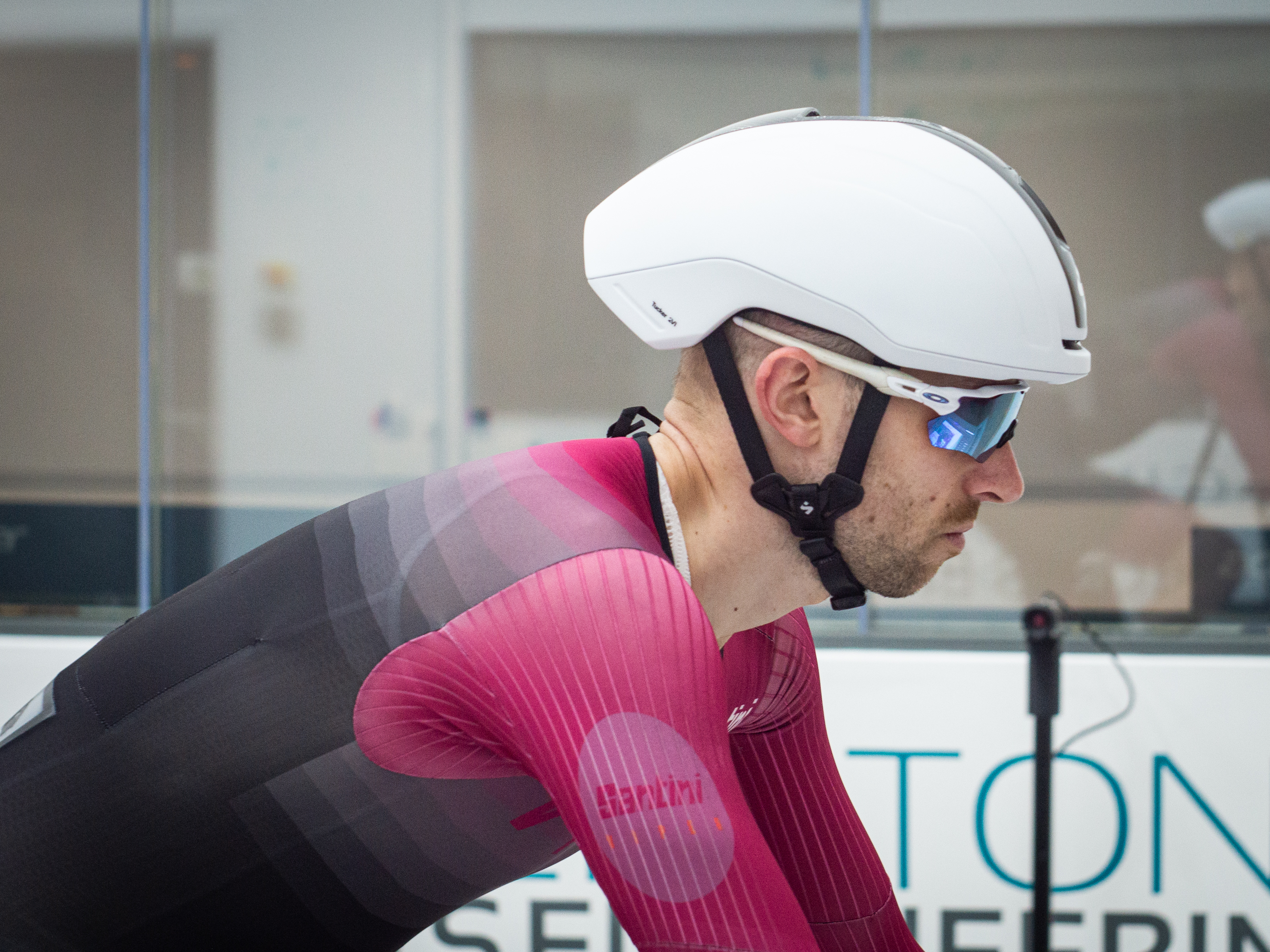
✅ Premium aesthetics
✅ Well-ventilated aero helmet
❌ More aero options available
The Tucker 2Vi, like the Ballista from Trek, leaves no illusion as to its aero intentions, with minimal vents and a long tail. The carbon fibre centre adds a premium aesthetic, and the breathability is actually pretty good.
It came a reasonable 10th in our test too.
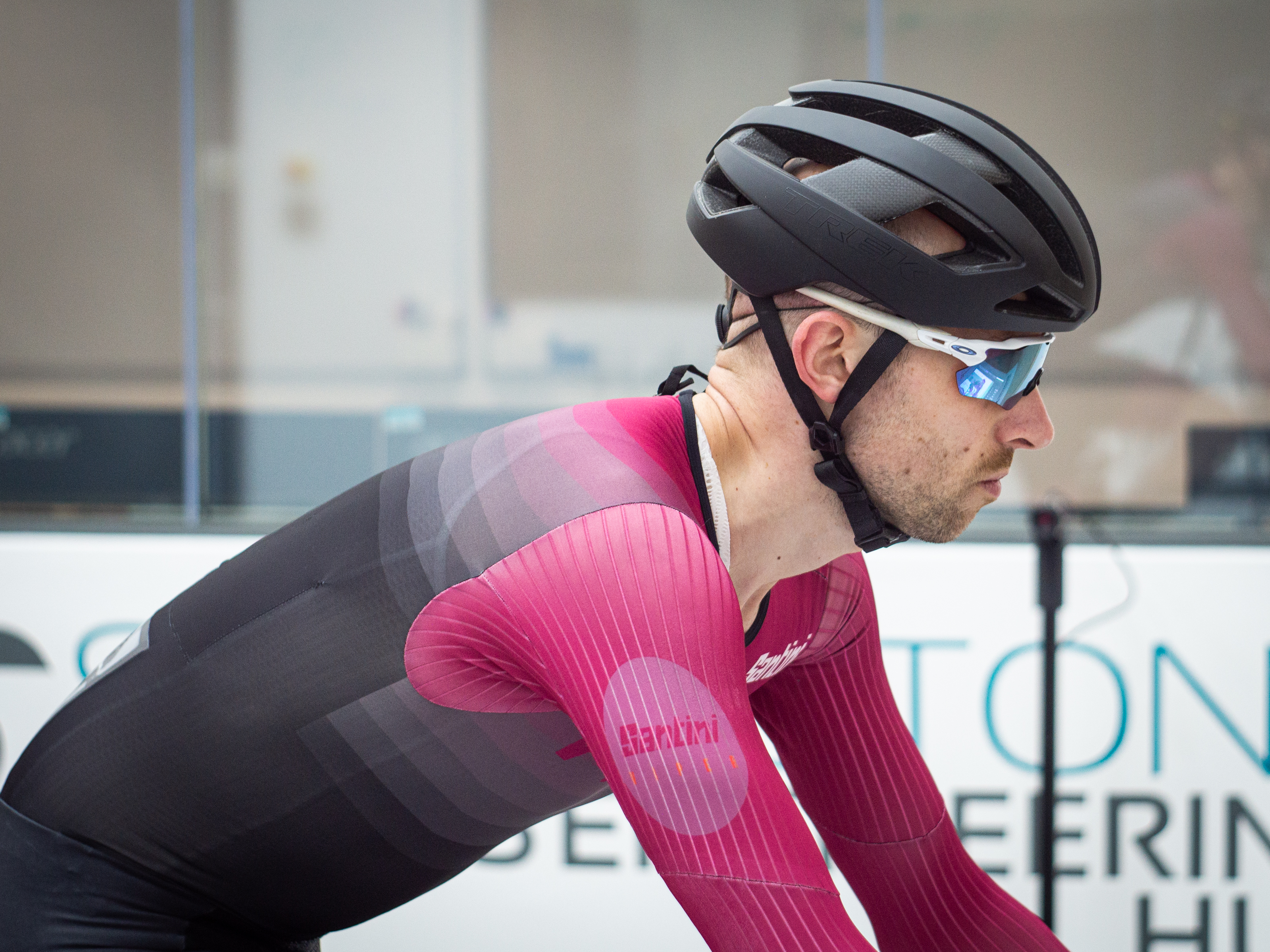
✅ Well-rounded vented helmet
✅ Comfortable and adjustable
❌ Aero performance suffers due to vented design
The more vented of Trek's dynamic duo, the Velocis sacrifices aero performance, placing 40th in our aero testing. Its 260g weight makes up for this though and it's a comfortable helmet. It scored better in our more head-up first wind tunnel test.
Like the Ballista, it gets a Boa dial, folding rear cradle, and MIPS tech, and we really like wearing it, but it didn't do enough to warrant a place in this guide.
How to choose the best aero helmet for you
You won’t find a definitive answer as to what the fastest aero helmet is for you without buying every one of them and going to a wind tunnel yourself, but from our tests, you can get a good idea.
So take that info and combine it with the other aspects of a helmet that you find important when deciding on the best aero helmet for you. As with any of the best cycling helmets, key factors to consider are:
- Fit: If you can, try before you buy to make sure that the helmet fits snugly and is comfortable. Make sure you can adjust it to fit your head.
- Aero performance: If you're going to choose an aero helmet, you want it to be aero, so it's worth consulting our wind tunnel test to see how a helmet scored.
- Ventilation: Will there be enough airflow for where and how you ride? If you live somewhere hot or hilly or tend to run hot, you may want a more vented design.
- Weight: You may want to choose a lighter helmet, although once it's on, you're unlikely to notice unless it's particularly heavy.
- Safety features: All helmets have to pass basic safety standards, but do you want extra features such as MIPS - read more in our FAQs below.
- Price: An aero helmet may be more expensive than a non-aero alternative with similar features.
Everything you need to know about the best aero bike helmets
What is an aero helmet?
Before we get too far down the path of choosing an aero bike helmet, let's define what we are discussing. Most people are familiar with the idea that there are helmets designed for time trials or the bike leg of a triathlon. That's not what an aero helmet is.
Instead, we are discussing the kind of helmet you can wear on every ride. These are helmets that are relatively light, they flow air, and they are not deeply affected by head position. Aside from the POC Procen Air, they don't feature full shield lenses and instead are designed to work with the best cycling glasses. In many ways, an aero helmet is just a standard road helmet.
What's different is a willingness to trade weight and ventilation for better aero optimisation. They're often a bit heavier and a bit hotter than the best road bike helmets, though to varying degrees.
Is an aero helmet worth it?
Now that we are all on the same page, it makes sense to question if it’s worth bothering.
In answering this question, let's look at how much faster a helmet can make you. In our wind tunnel helmet test, we found that the difference between the fastest and slowest aero road-style helmets was 8.85 watts when riding at 40km/h (around 25mph), or 3.7 watts when riding at 30km/h (around 18.6mph).
Calculate that into seconds saved, and the fastest helmet in our test will save you 43 seconds in a 40km time trial when riding at an average of 250 watts, or around 1.2% faster, for no extra effort.
Simplifying the results, that's a similar aerodynamic saving to an upgrade from a cheap shallow wheel to a pair of the best road bike wheels. However, if you're chasing speed, our rolling resistance tyre tests found savings of up to 30 watts for a pair of tyres between the fastest and the slowest, while our wind tunnel clothing tests unearthed an additional 24 watts at a similarly good watts-per-price ratio.
But aero helmets don't tend to cost any more than the same brand's 'vented' helmet, so assuming you're buying a new helmet, then choosing one of the best aero helmets is a no-brainer.
Do women need women's-specific helmets?
Among helmet manufacturers, there's a bit of a conflict in that some offer separate women's specific helmets, while other brands' ranges are totally unisex.
We tackled the question of whether women need women-specific helmets in depth recently, with the main takeaway being that unisex helmets are usually preferred by most and that there's nothing about a woman's head that would require a different helmet shape. All of the helmets in this list are unisex.
Do aero helmets matter for slower riders or riders who don’t race?
In every discussion about aero advantages, someone eventually mentions they only matter to fast riders. This idea likely comes from the fact that going faster requires exponentially more power to cut through the air. That means you can typically save more watts at higher speeds. Cycling companies, of course, exploit this fact by doing tests at high speeds to show more impressive numbers.
Those high-speed tests hide part of the story though. As you go faster, the number of watts saved grows but the time saved gets smaller. The slower you are, the longer you spend covering a distance, so while the number of watts saved is smaller, the time saved is greater.
The other reason why you might actually care a lot about the numbers at high speeds is because of headwinds. You might be going forward at a lower speed but a headwind effectively adds to the speed you are experiencing. 30 km/h is reasonable for a road bike, but if you add a 20 km/h headwind, all of a sudden, you are dealing with the same aero situation as a pro rider travelling at 50km/h.
Because aerodynamics is the biggest force we all deal with on a bike, optimisation matters to everyone. Gravel cyclists and slower riders of all kinds can go faster by getting more aero. When racing, that means finishing faster. If you aren't racing, that might mean finishing at the same speed with less work.
Do aero helmets make you overheat?
For a lot of people, the reason to hesitate before buying an aero helmet is all about comfort. Aero helmets have a reputation for being hot and that turns people away. Brands reinforce that idea by offering aero helmets as an alternative to helmets with branding, emphasising how airy they are.
In my experience, the reality of riding with an aero helmet is actually quite different. While aero helmets do have less venting, it's highly optimised. Modern designs use CFD analysis to put a limited number of vents in just the right place. Then, on the rear of the helmet, large exhaust vents let the hot air out, in turn pulling air through the helmet and across your head. As long as you are moving, the best aero helmets will stay cool.
When you slow down, aero helmets suffer from less opportunity for heat to escape. Those hot, brutal summer climbs can leave you feeling cooked. Here's the thing that rarely gets discussed though, those same climbs will leave you feeling cooked in non-aero helmets also. It's hot and you are climbing, so buckle in and prepare to sweat. Aero helmets aren't significantly worse in this regard.
Are aero helmets heavy?
Aero helmets are not only hot but also heavy, right? That's the reputation and I would have agreed before working on this article. It only makes sense that aero helmets would be heavier, given that they seem to have more material. When I actually weighed a bunch of helmets though, I found the opposite. Some of the lightest helmets on the market are aero helmets. With fewer vents, the shell can in some cases be made rigid with less reinforcement.
Overall, on average they do tend to be heavier, but it's not always the case, and even when they are, it's not a significant difference.
Are there any downsides to aero helmets?
When it comes to performance, there are very few downsides to the best aero helmets. They aren't necessarily heavier, they aren't particularly hot, and they offer an opportunity for free speed. Except nothing is free and when it comes to downsides, the one sticking point is actually the price.
The best aero helmets aren't more expensive as a whole. Often, the top price point a brand offers will have an option for an aero option or an all-around vented option and they'll be the same price. Keep moving down through the model range though and aero-first helmets will disappear.
Do I need MIPS in an aero helmet?
Aero helmets are still bike helmets. All the same questions that exist with any bike helmet exist for aero helmets and MIPS is a big question. The actual name is a distraction though.
As explained in our guide to MIPS, it is a brand name and an acronym. The letters stand for Multi-directional Impact Protection System and the brand is offering technology to protect in situations where impact occurs off-centre. If you see a MIPS label on a helmet, it means the brand paid a licence fee and is using the MIPS technology.
MIPS is only one brand offering a solution and there is no definitive answer of whether it's the best solution available. No one really knows the best way to protect against a concussion, otherwise known as traumatic brain injury, in the event of an impact. What MIPS claims is that when the impact occurs off-centre, your helmet should be able to rotate separately from the head.
There are a variety of brands and organisations that agree with this assessment. Many of those brands licence MIPS technology to make use of it. Other brands agree on the basic idea but have their own systems to allow your head to rotate within the helmet. Alternatives are technologies like Kineticore from Lazer as well as WaveCel, Koroyd, and others that have come and gone through the years.
There are also brands that agree with the basic idea but disagree with how to address it. Kask is somewhat vocal about the idea that there's plenty of opportunity for a helmet to rotate on an actual human head without additional technology. The brand disagrees with the headform used by Virginia Tech and MIPS to test and has a proprietary WG11 test that does it differently. Rudy Project also has a similarly named, but different, test that aligns with that understanding and Snell has put out some information that seems to agree as well.
All that disagreement leaves the consumer with little clarity. Every helmet sold has to pass government testing for the location where it's sold. Those tests mandate a basic level of protection and from there, you'll have to decide what technology makes sense to you.
Is a Virginia Tech score important?
This is another variation on the same question about MIPS. Every single helmet sold passes a variety of government-mandated tests. Virginia Tech has become well known for developing a different test that specifically covers off-centre impacts. The results get reported as a number and the lower the number the better. Right now, the top-ranked road bike helmet, out of 275 tested, has a score of 7.51. If you also see a star ranking, that is the same testing displayed in a different way.
Given that Virginia Tech is the only independent testing organisation that offers more than a pass/fail, we think it's worth reporting. Unfortunately, there are a lot of helmets that have not been tested, some likely because of the speed with which new options come to market, some because of a disagreement about the protocol, and others for reasons unknown. If they have the number, we share it and you will need to decide if the helmet you decide on must have a score.
How do we test the best aero helmets?
Testing the best aero helmets for us is a combination of empirical testing and real-world riding experience.
The Cyclingnews team has been testing helmets for years, and we've ridden using every helmet we can think of. Our experience is great for teasing out differences in things like comfort, user experience, noise and so on, but even we would be hard-pressed to feel a 20-gram weight difference or the 1-2 watts separating each helmet.
So what's the best aero helmet for me?
The implication with an aero bike helmet is that it is a measurable way to make you faster. We have wind tunnels and we can measure drag, this should be simple right? Unfortunately, it's not quite that simple.
Here at Cyclingnews, we spent a day in the wind tunnel at Silverstone testing 47 helmets to find out which was fastest in a fairly aggressive aero breakaway position.
All were tested on a mannequin for repeatability, using the same skinsuit and mounted on the same bike, with aero drag measured at a wind speed of 40km/h and over a range of yaw angles. We re-tested the fastest ten helmets at 50km/h. Cyclingnews subscribers can read our wind tunnel helmet test in full, if you want to get nerdy with the data.
We're aware, however, that what's fast for one person isn't necessarily fast for the next, and helmet aerodynamics can differ from one position to the next.
The latest race content, interviews, features, reviews and expert buying guides, direct to your inbox!

Josh is Associate Editor of Cyclingnews – leading our content on the best bikes, kit and the latest breaking tech stories from the pro peloton. He has been with us since the summer of 2019 and throughout that time he's covered everything from buyer's guides and deals to the latest tech news and reviews.
On the bike, Josh has been riding and racing for over 15 years. He started out racing cross country in his teens back when 26-inch wheels and triple chainsets were still mainstream, but he found favour in road racing in his early 20s, racing at a local and national level for Somerset-based Team Tor 2000. These days he rides indoors for convenience and fitness, and outdoors for fun on road, gravel, 'cross and cross-country bikes, the latter usually with his two dogs in tow.
